The Arctic Fox Centre is a small museum in the Westfjords of Iceland. It informs about Arctic foxes in Iceland like, for example, about the history of these animals in the country or about how and where they live. I combined my visit to the museum with a cycling tour from Ísafjörður to Súðavík. In this blog entry I write more about my cycling tour and the Arctic Fox Centre.
Cycling tour to the Arctic Fox Centre
Long and even roads. Almost no cars or other vehicles. And surrounded by beautiful landscapes. I was very in the mood for cycling the roads of Iceland when I arrived in Ísafjörður. And why not cycling to the Arctic Fox Centre in Súðavík? I wanted to visit this place anyway.
Well, I put my plans into action.
On my first day I had already been on Vigur Island – another place which is very worth a visit.
And on my second day of my stay in Ísafjörður, I needed to do some exercise.
Thus, I left Ísafjörður in the morning by bike.
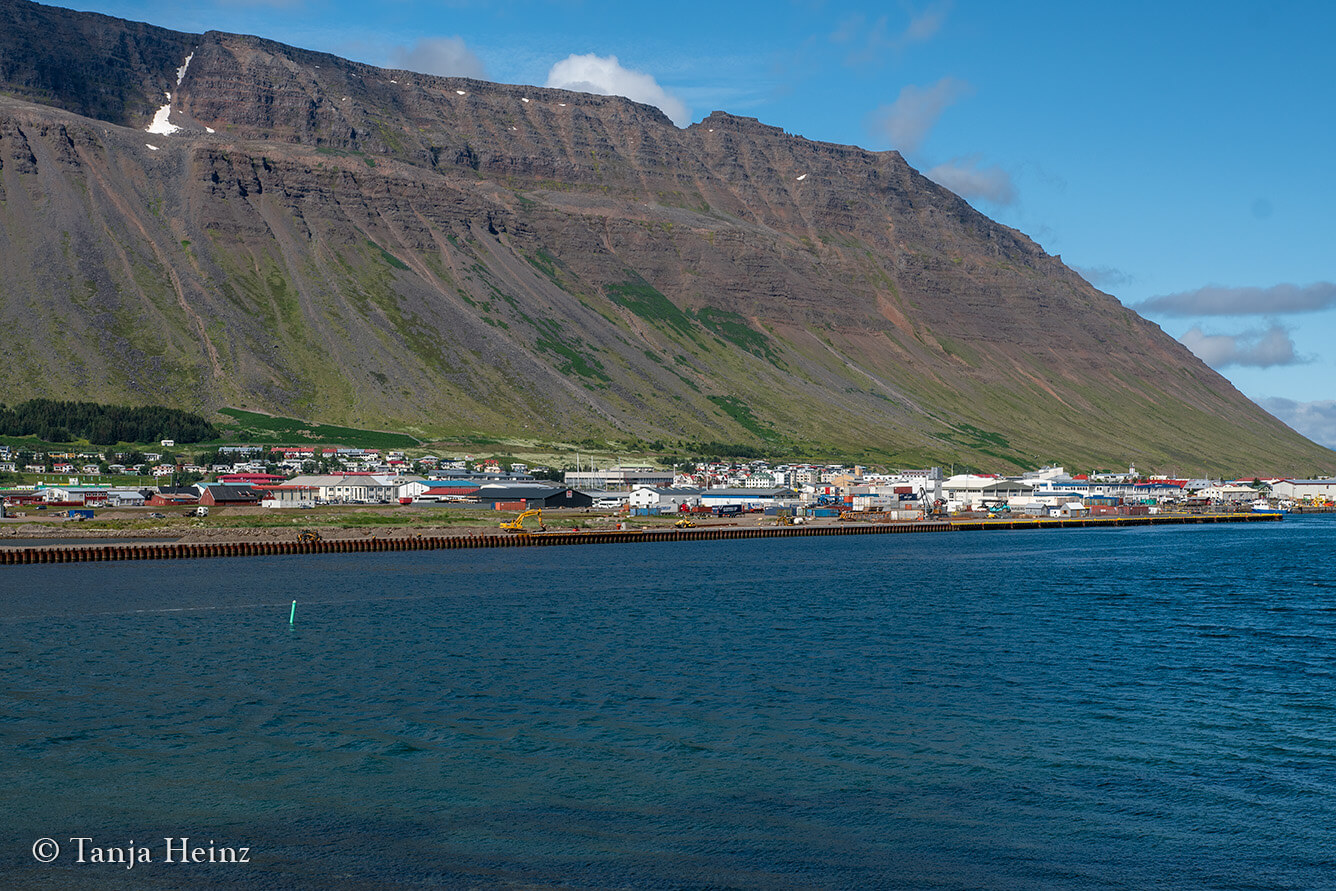
It was a wonderful day. The two previous days were cloudy, dark, and it even rained several times.
But on the day of my cycling tour, I was more than lucky to get such a beautiful weather in Iceland.
The roads that led out of Ísafjörður were in good conditions. But there was no bicycle lane. However, as there were not so many cars on the road, I felt save.
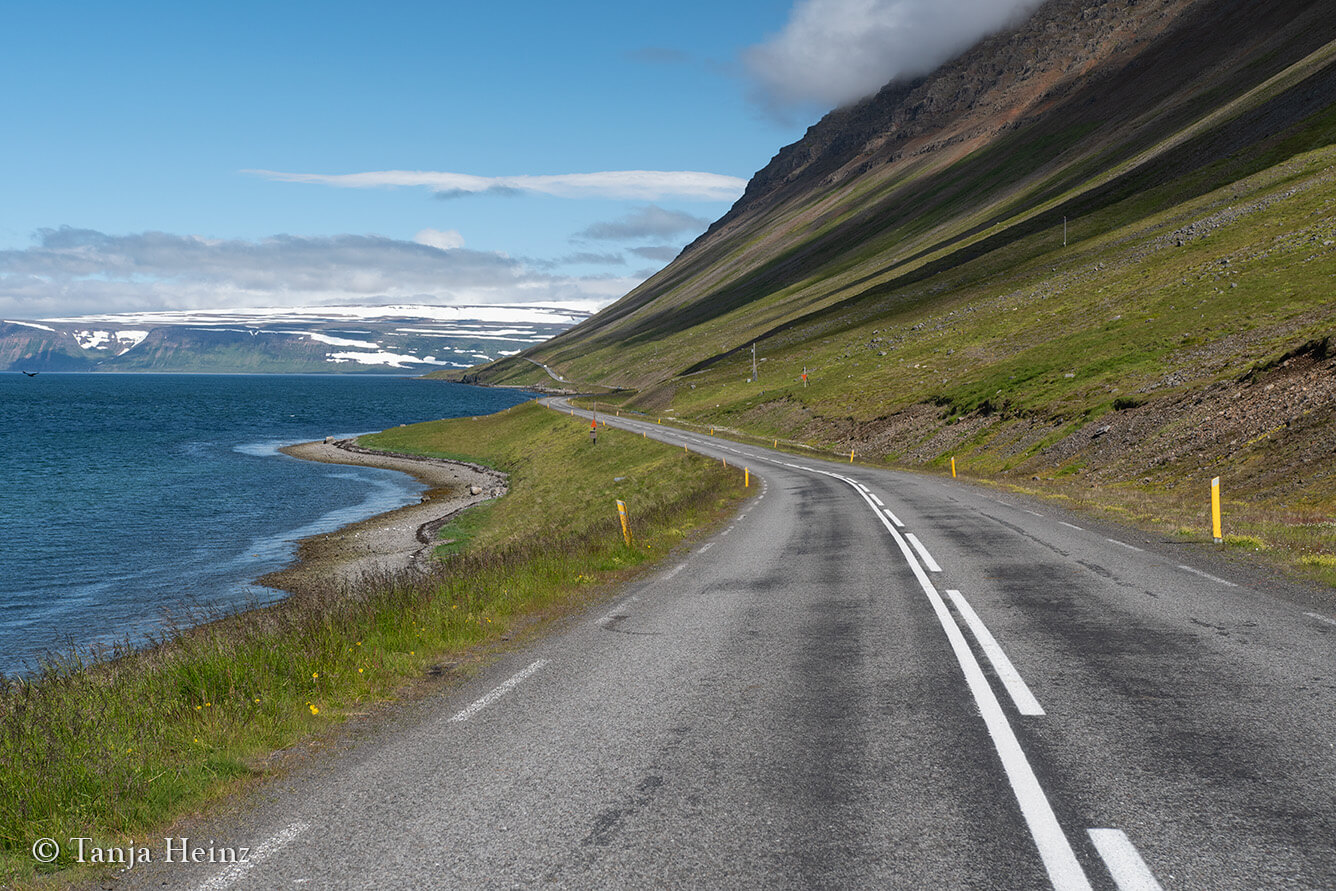
Information: I rented a bike at Borea Adventures. They even opened on Sunday. It was the only option I found in Ísafjörður. Borea Adventures offers also several tours to the Hornstrandir Nature Reserve. I participated in the “Midnight Sun and Arctic Foxes” tour on the following days.
The first part of the cycling tour was the most exhausting part. I had to cycle against headwind and the road led up.
But it was still a pleasure tour.
I passed the airport.
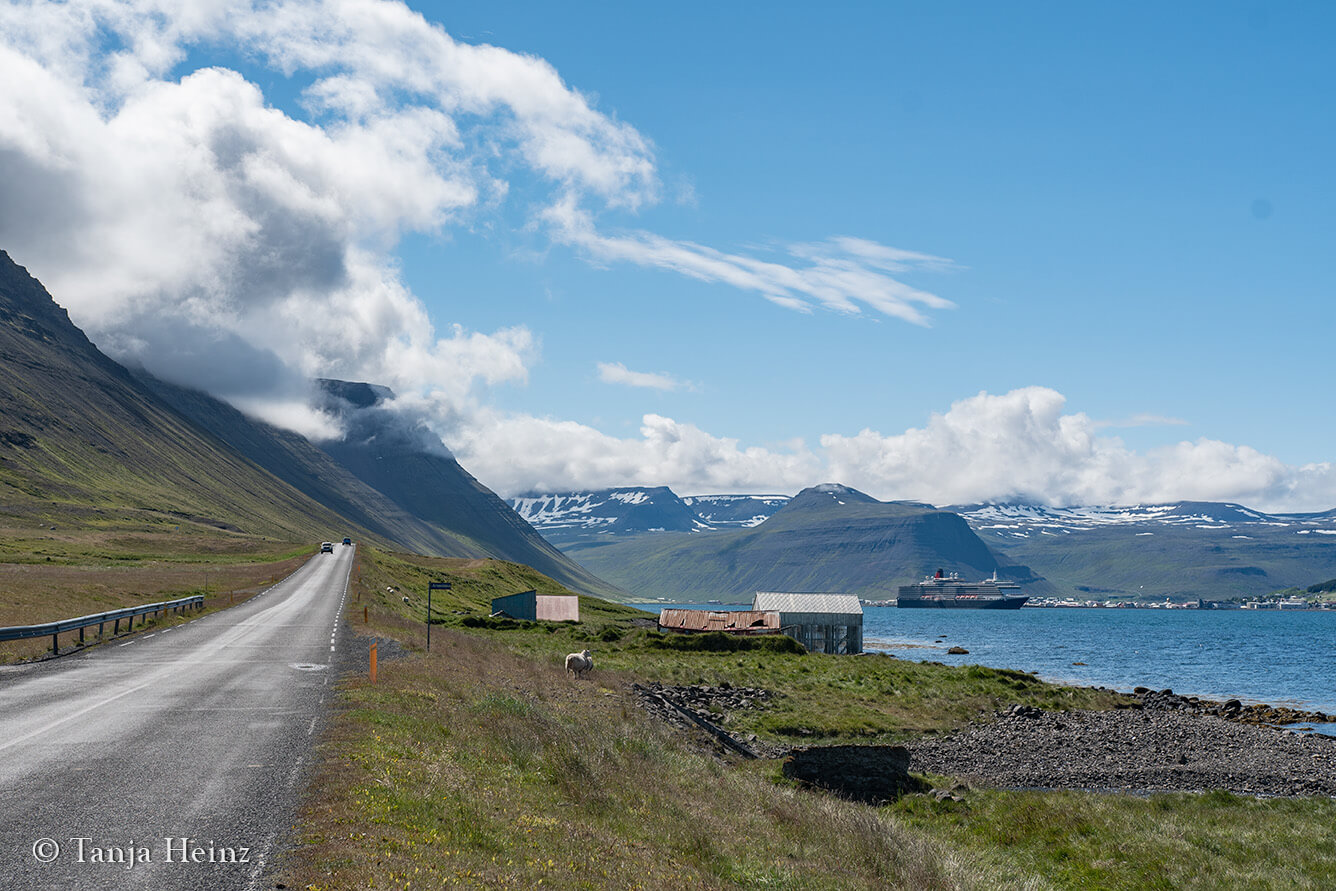
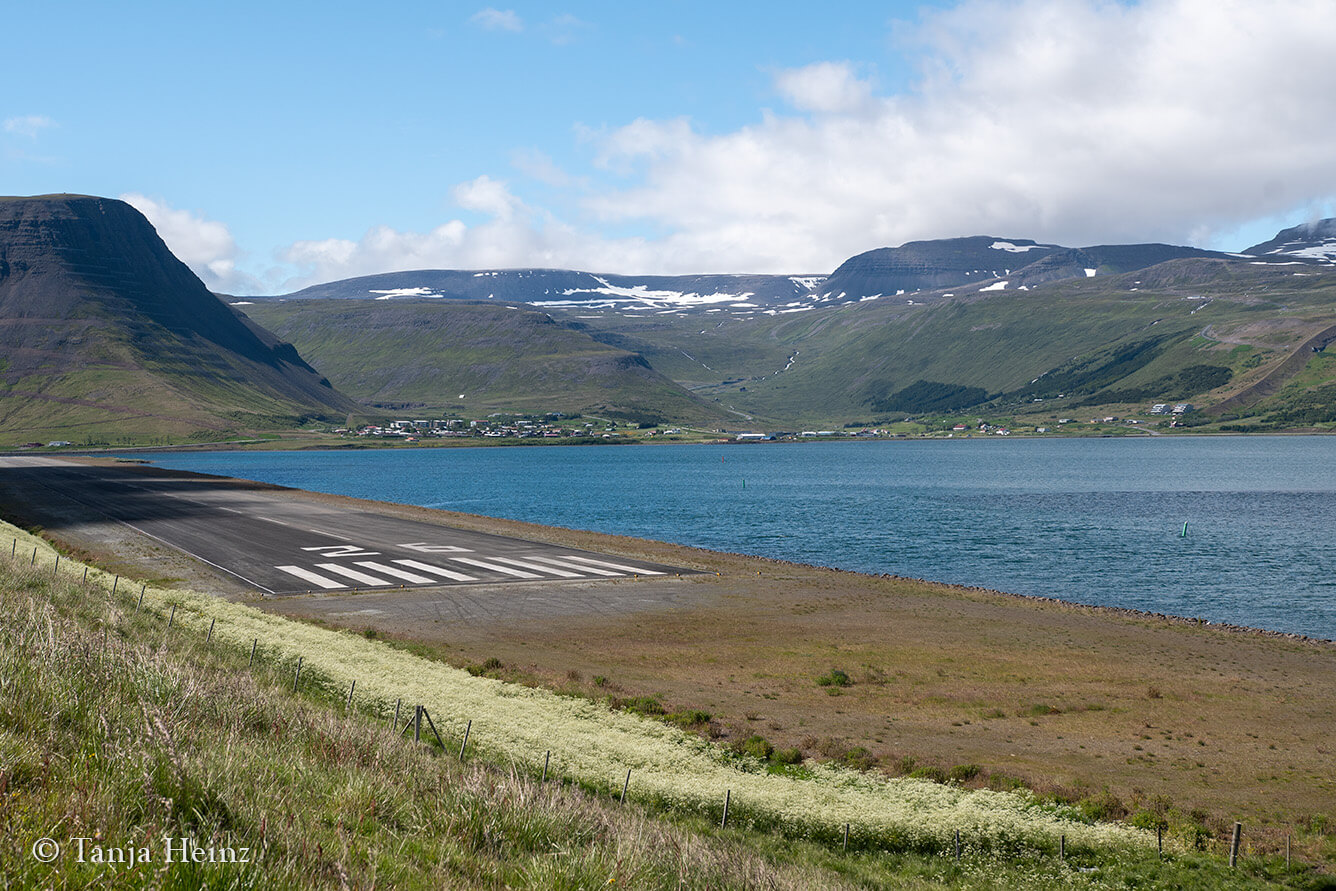
I saw some sheep.
Sometimes, the sheep stayed on the road. But as there were cars at times, they had to move again. Thus, they often rather had to walk along the road than being able to rest.
I stopped several times on the tour. I would have loved to take some photographs of the sheep. However, they were quite elusive and always ran away when they saw me.
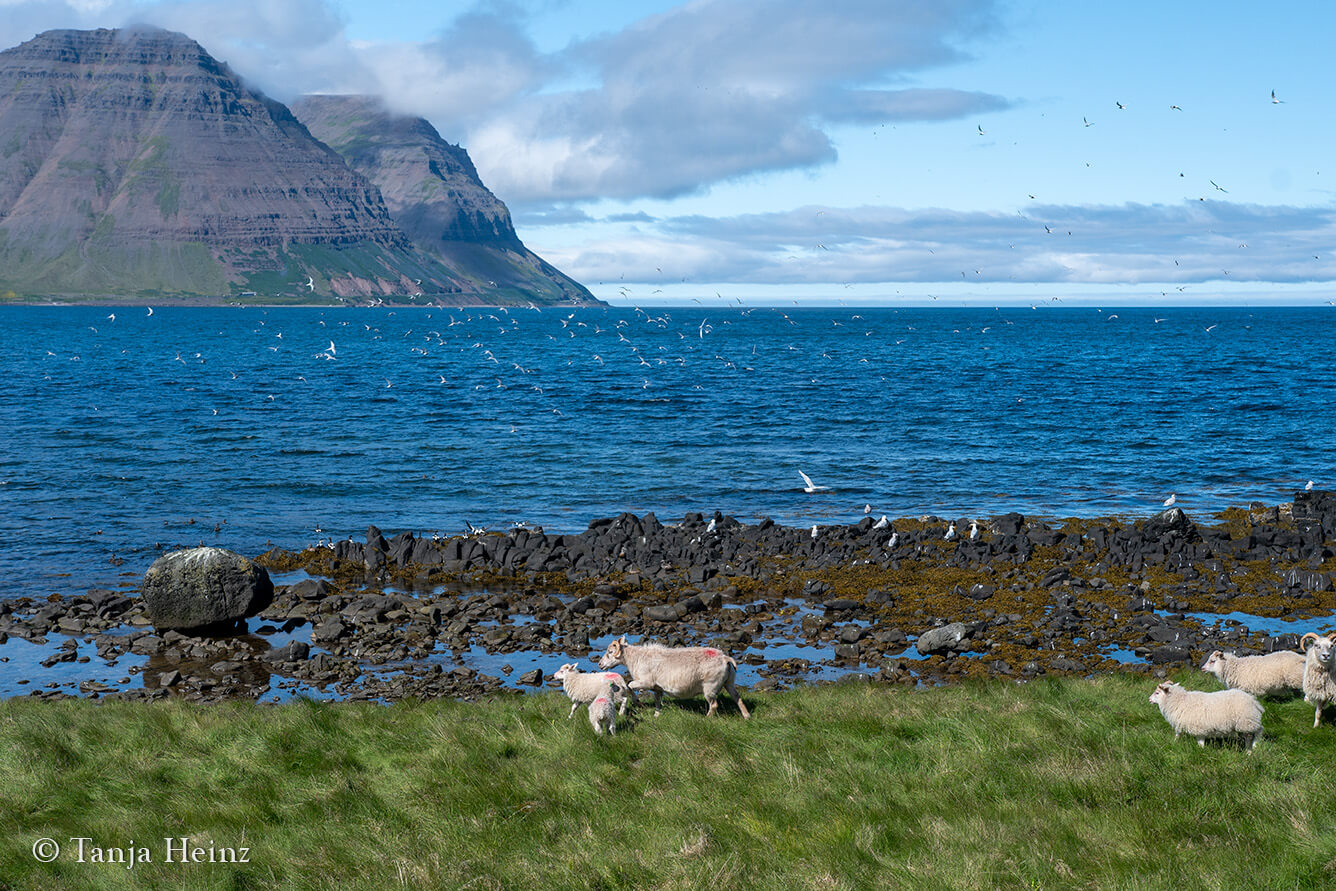
I went further away from Ísafjörður and left the large cruise ships behind. I had snow-covered mountains in front of me.
I was curious to know what else would expect me.
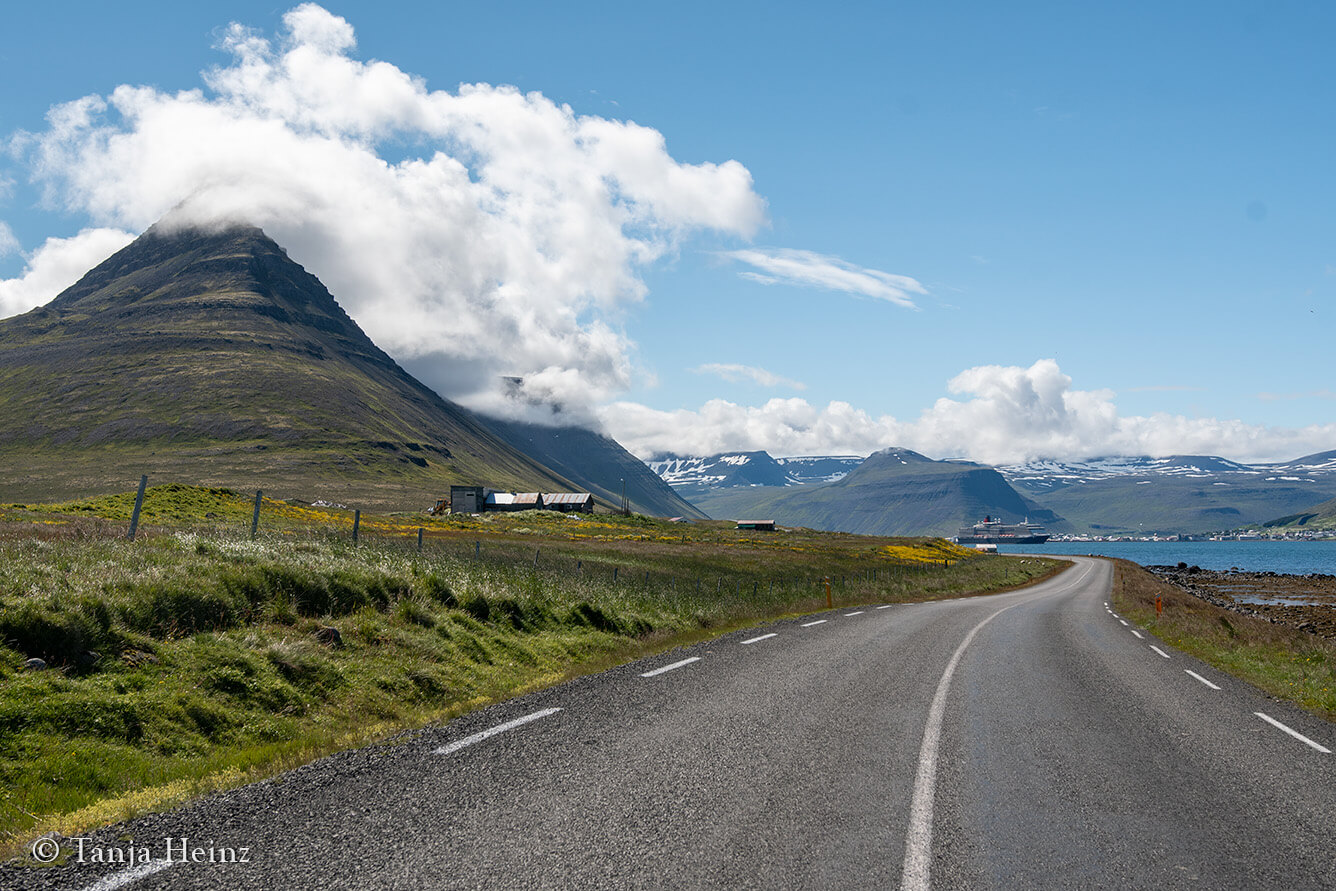
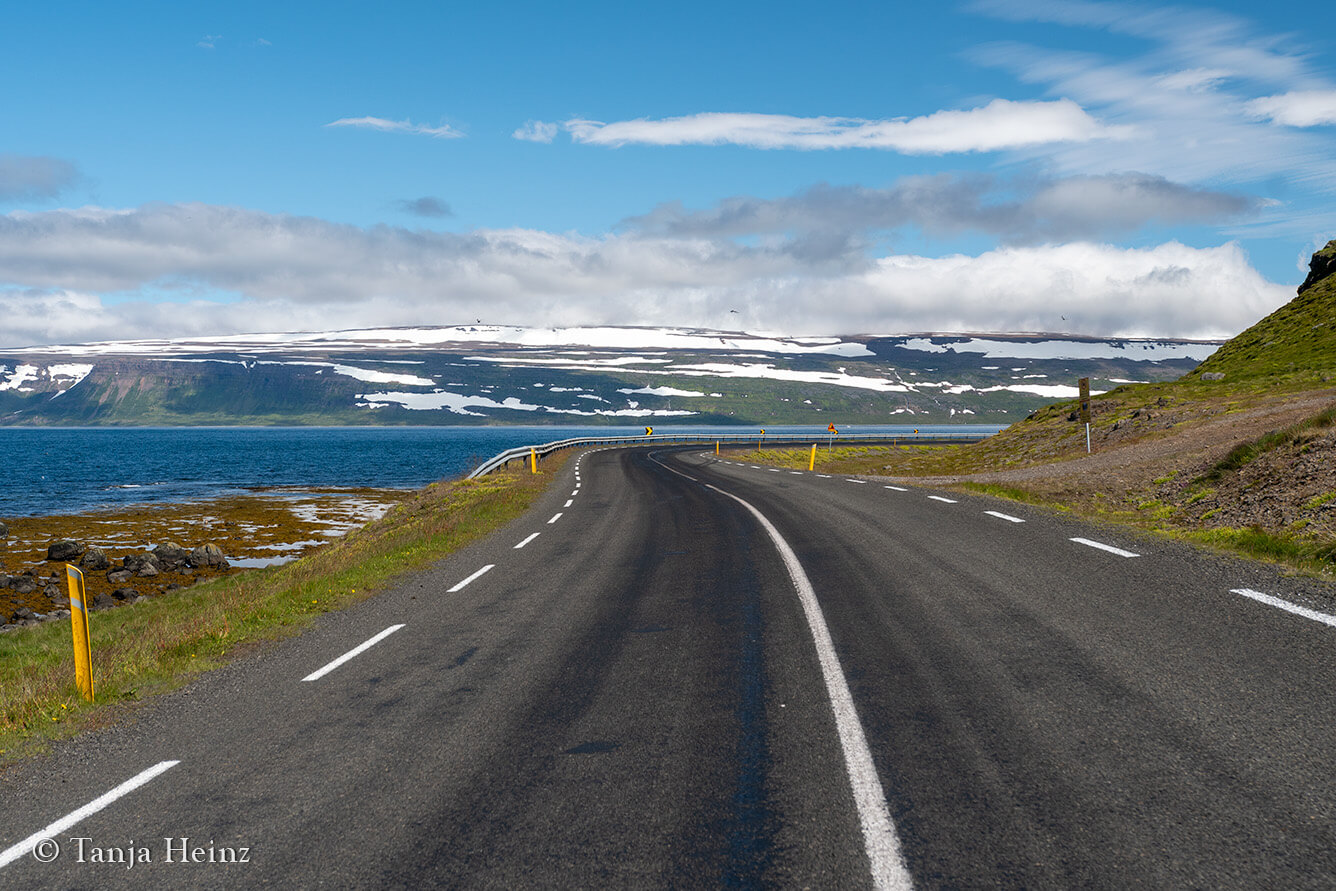
In the hostel where I stayed, I heard from other people that there might be seals close to the roads.
Thus, I had a close look onto the sea. Maybe there was anywhere a harbour or grey seal lying in the sun anywhere on a large stone.
Especially on a day like that, I was very hoping to see a seal.
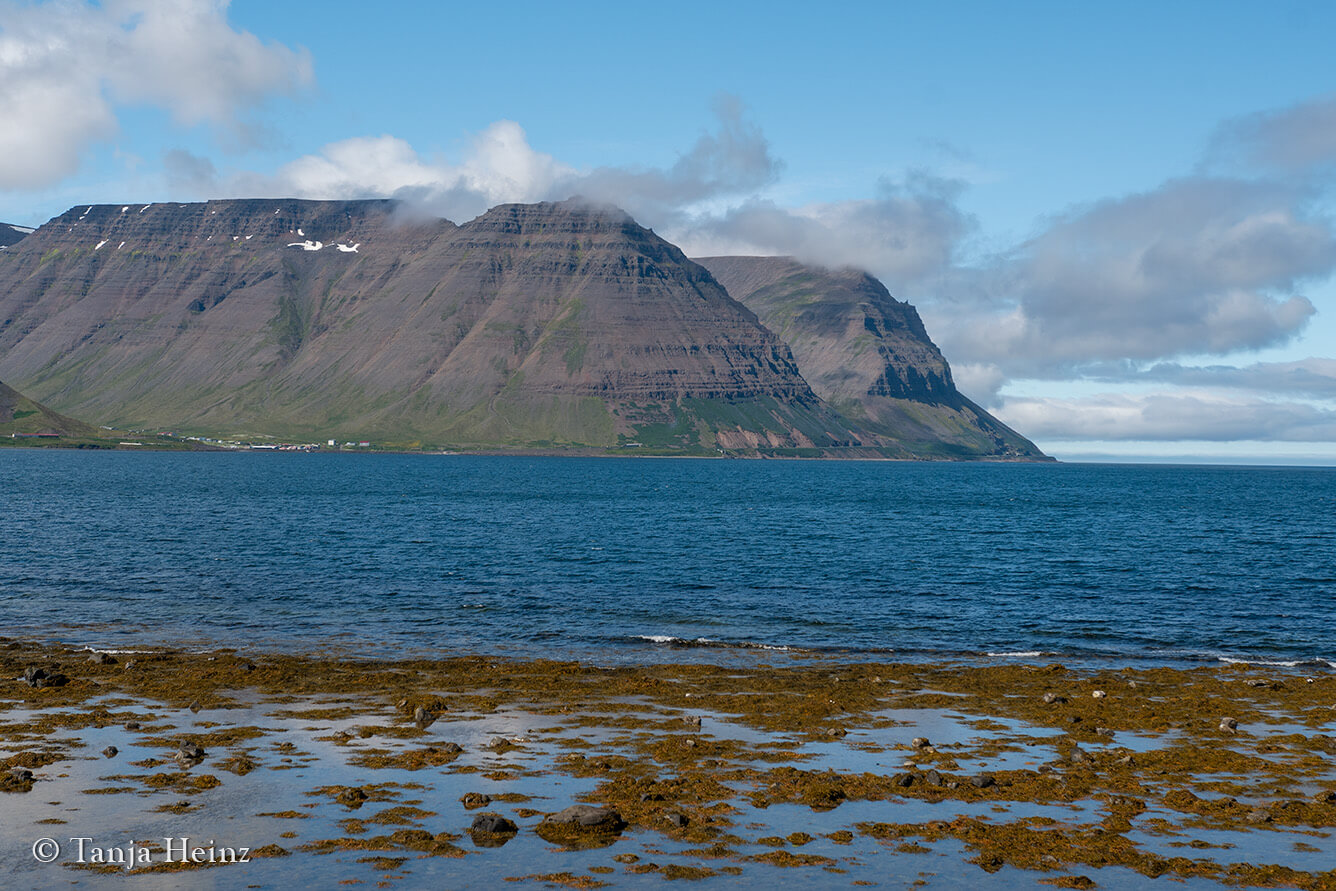
Along the road was a resting spot.
I stopped, as I wanted to have a closer look onto the sea.
I was very hoping to spot a seal.
But everything in vain.
There was no seal around.
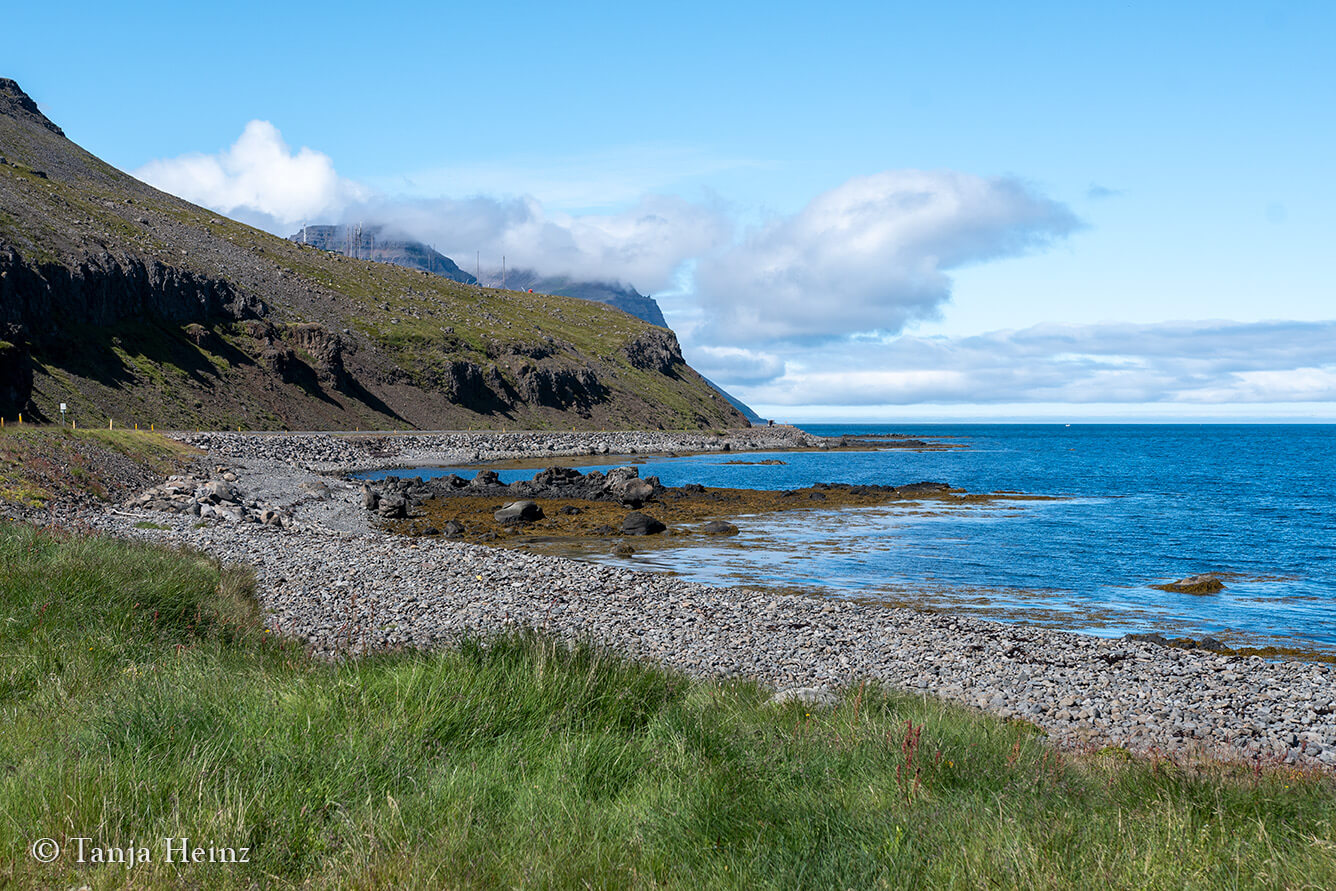
Information: Although I did not observe any seal along the road, I saw a grey seal on another day in the Hornstrandir Nature Reserve. On Vigur Island, I observed some harbour seals close to the shore lying on stones. In general, I found not such great opportunities in Iceland to observe seals (although it was still great in Iceland, of course). Good opportunities I found so far, for example, on Heligoland.
But ok!
I still had a good time and I really enjoyed the Westfjords.
One beautiful scenery after the other.
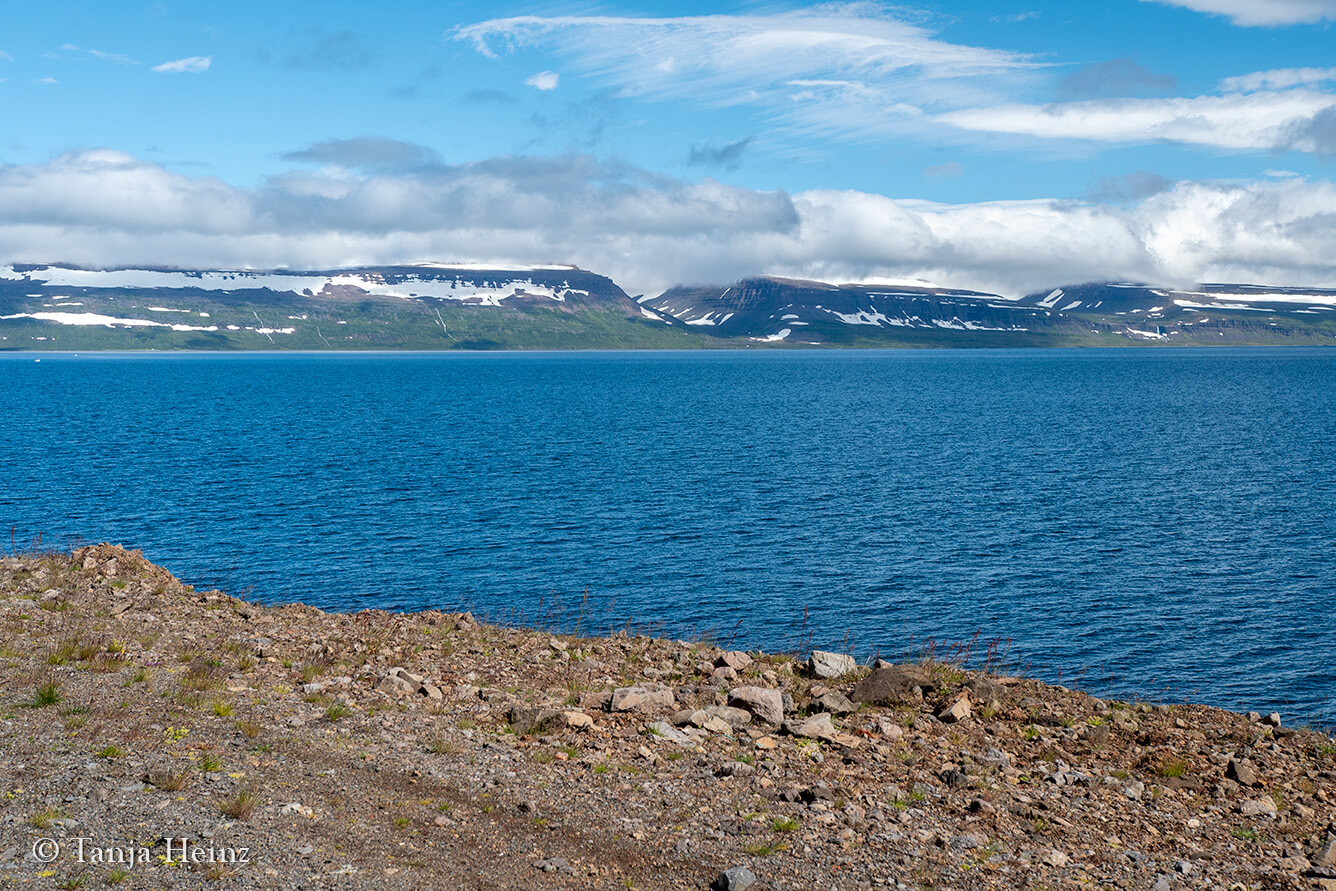
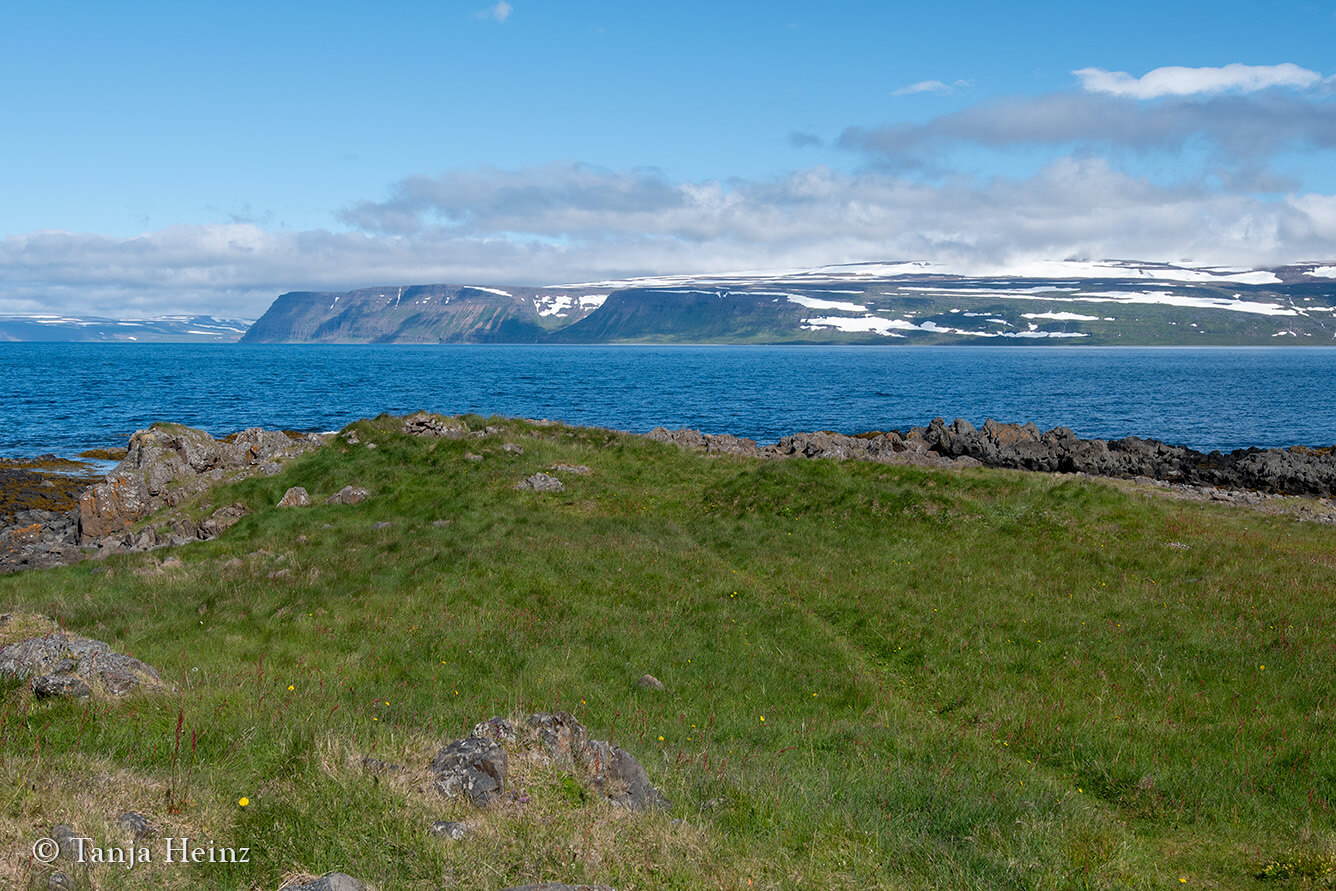
I was alone. Except for the few cars that passed and for the few cyclists I met.
I was slow. I am not a very sports-minded person. Thus, I was completely okay with my velocity.
Furthermore, I wanted to stop at times and marvel at the landscapes under the almost cloudless sky.
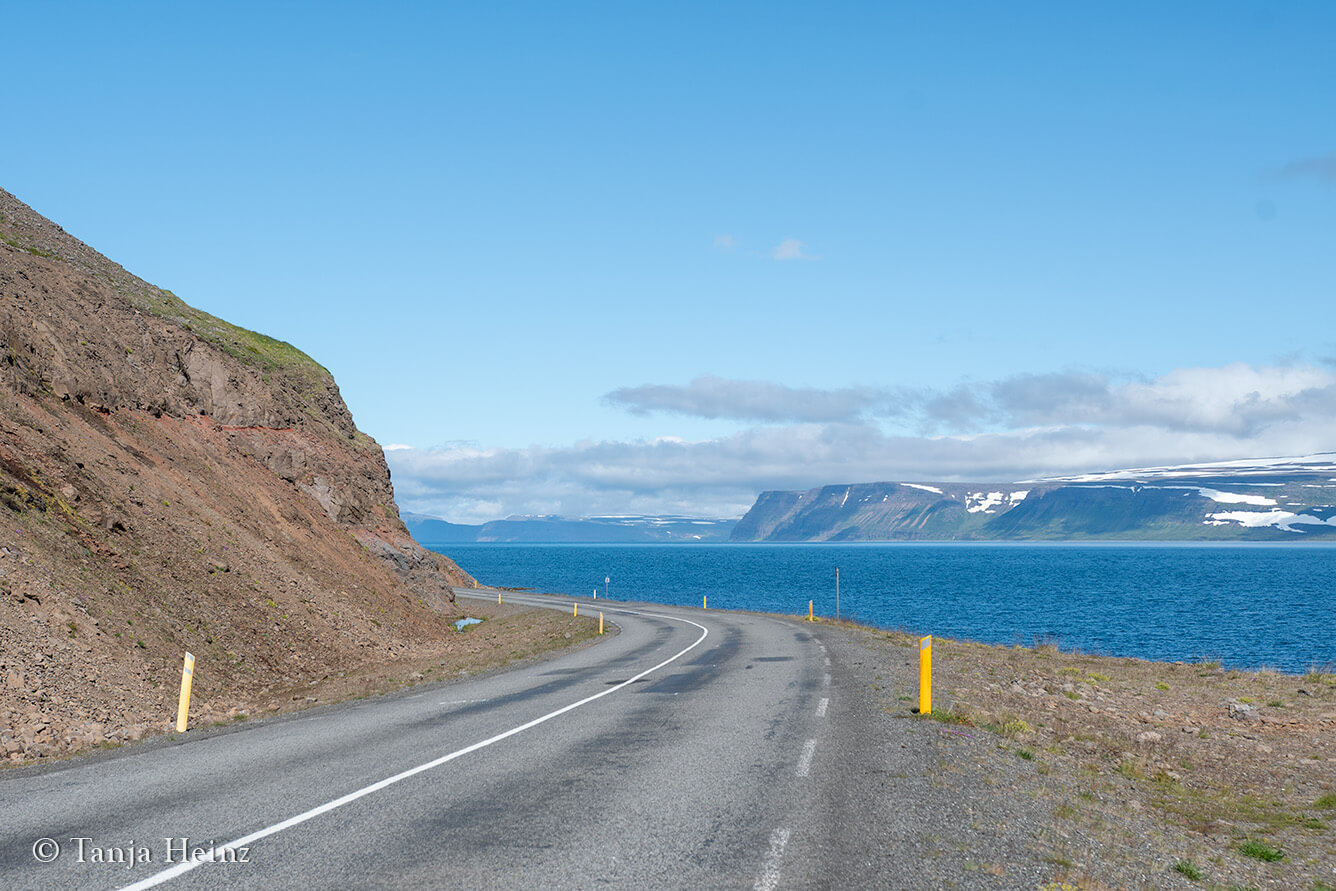
By the way, hitchhiking would be another possibility to get to the Arctic Fox Centre.
In the hostel I met a woman who was not up to cycling. She decided to hitchhike.
Well, this is possible, of course. However, for me cycling was the better options. The connection with the landscapes was like that just more intense. Passing all these landscapes in a fast car or bus, would not have been the right choice for me.
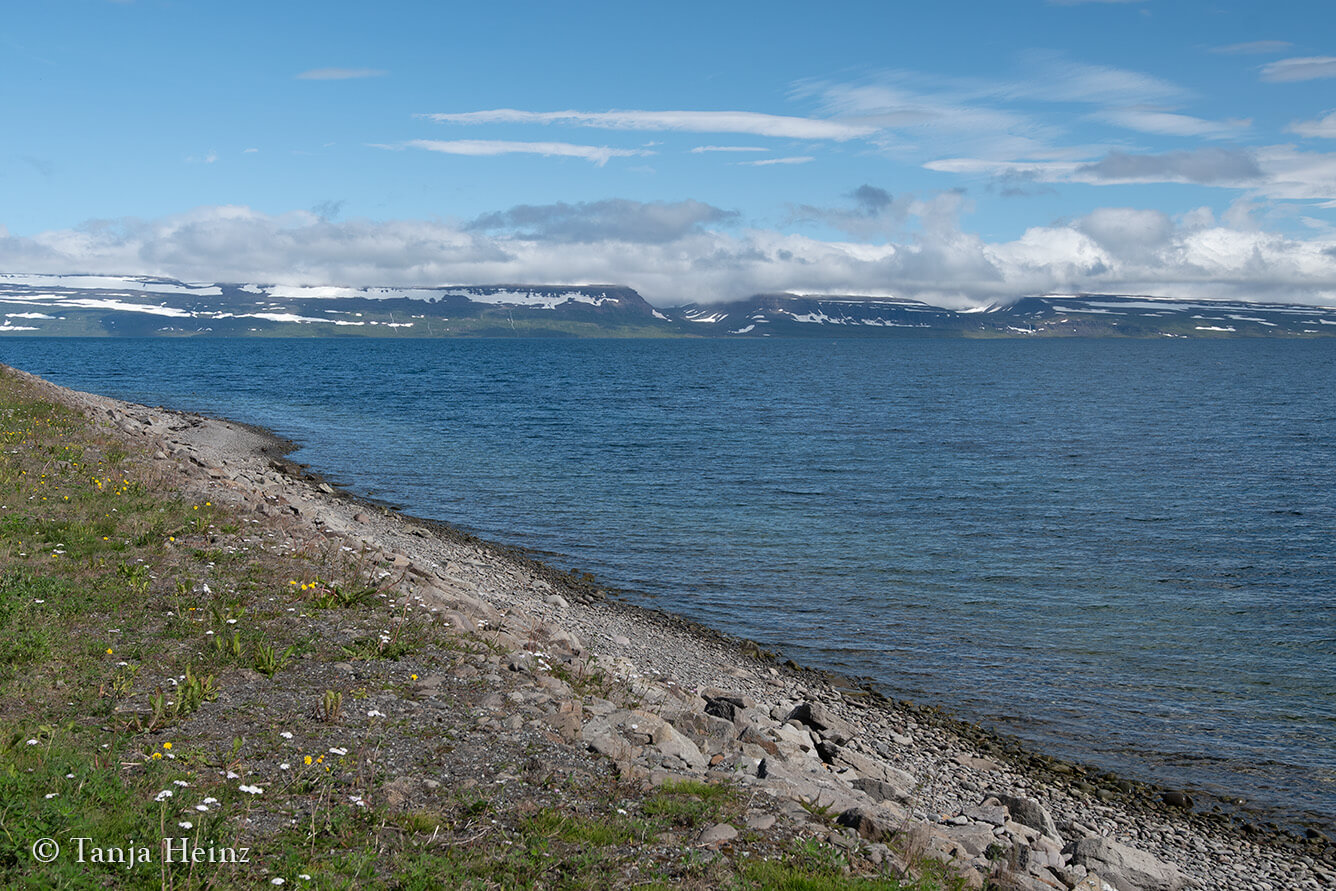
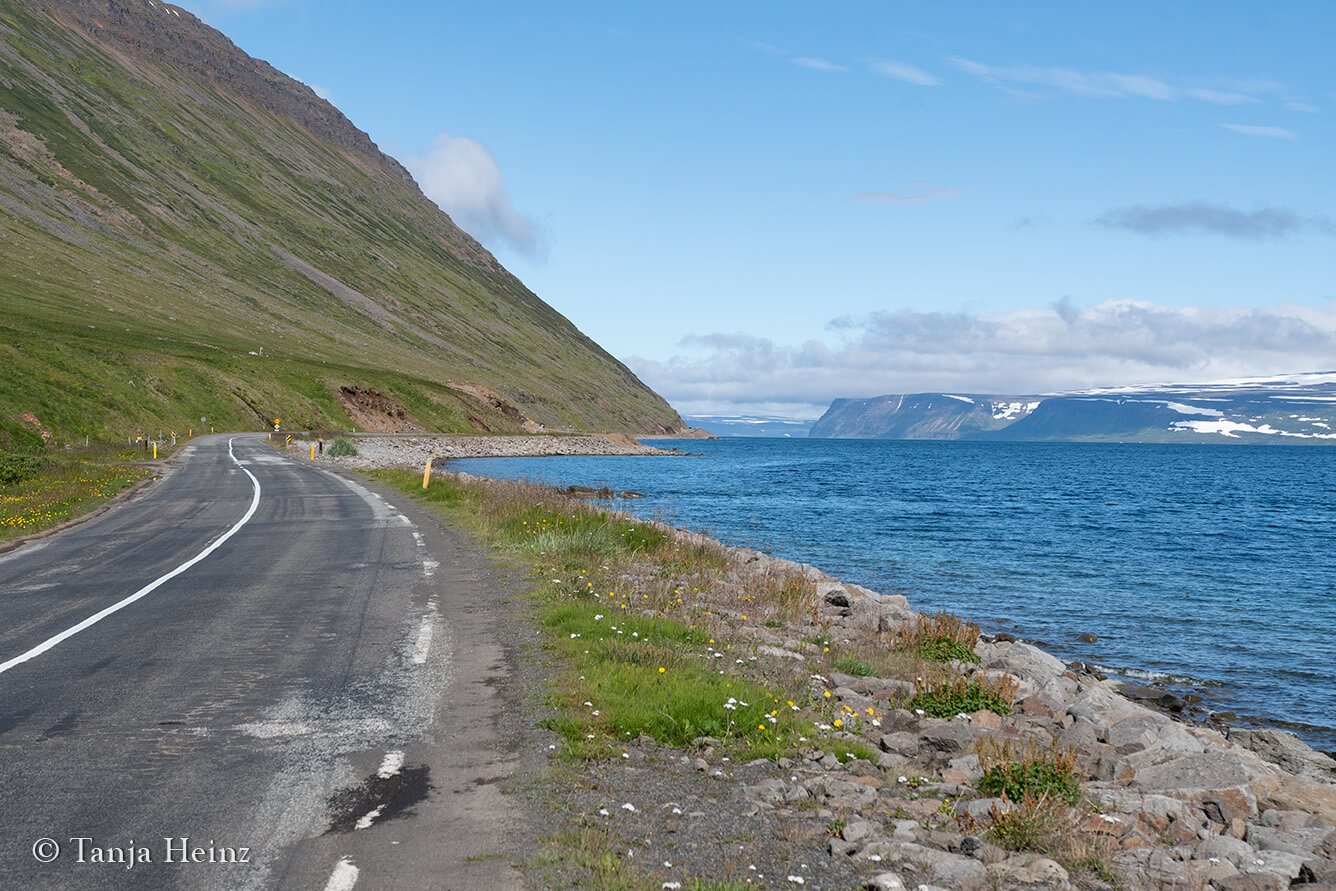
Information: I experienced Iceland as a save place for hitchhiking. I was “forced” to hitchhike in Akureyri, because there was no bus to Dalvík. There is, unfortunately, not always public transportation. If there is public transportation, it is I think reliable. The greatest challenge is, however, to find information about departure times of buses.
Just before entering Súðavík, the mountains to my right became greener and greener.
It was again very beautiful. I loved the colour contrast of the red, small hut together with the green of the mountain. How often did I use the word “beautiful” on that day?
I cannot remember. But for sure, it was quite often.
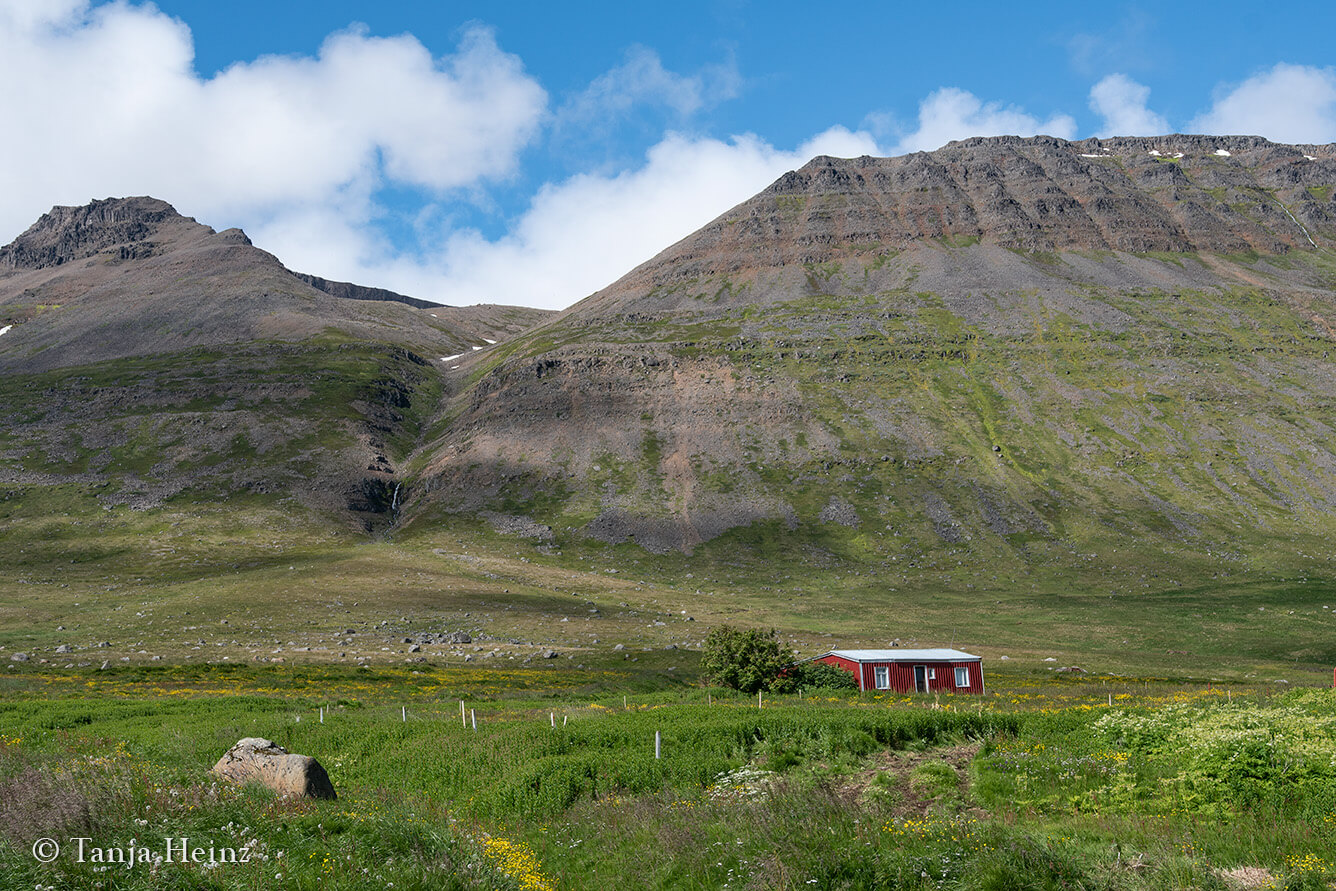
Not far away from the red hut, I entered in Súðavík.
It took me less than two hours to get from Ísafjörður to Súðavík.
This is important information, because I rented a bike for only about four hours. Thus, I had not so much time to enjoy the sceneries.
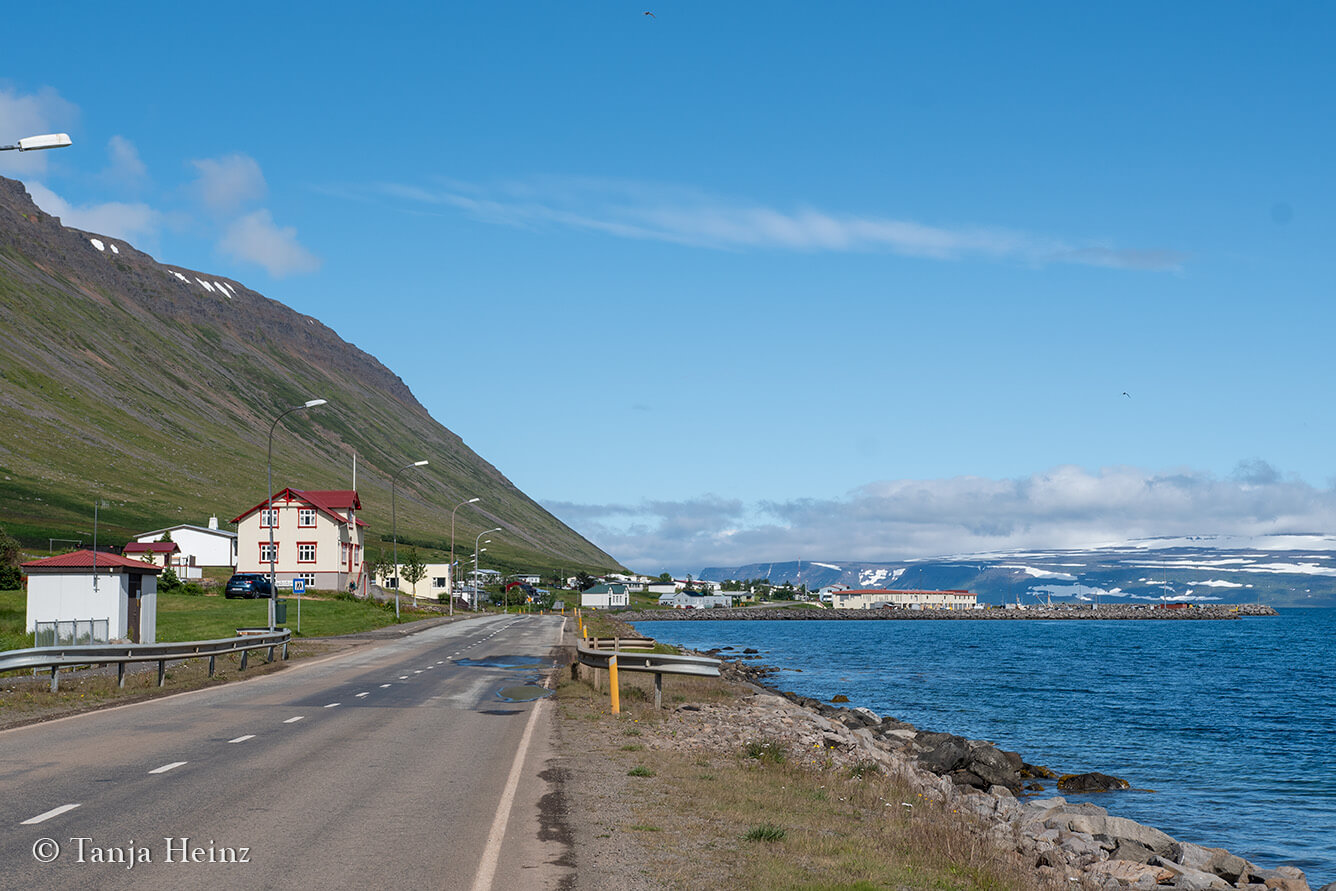
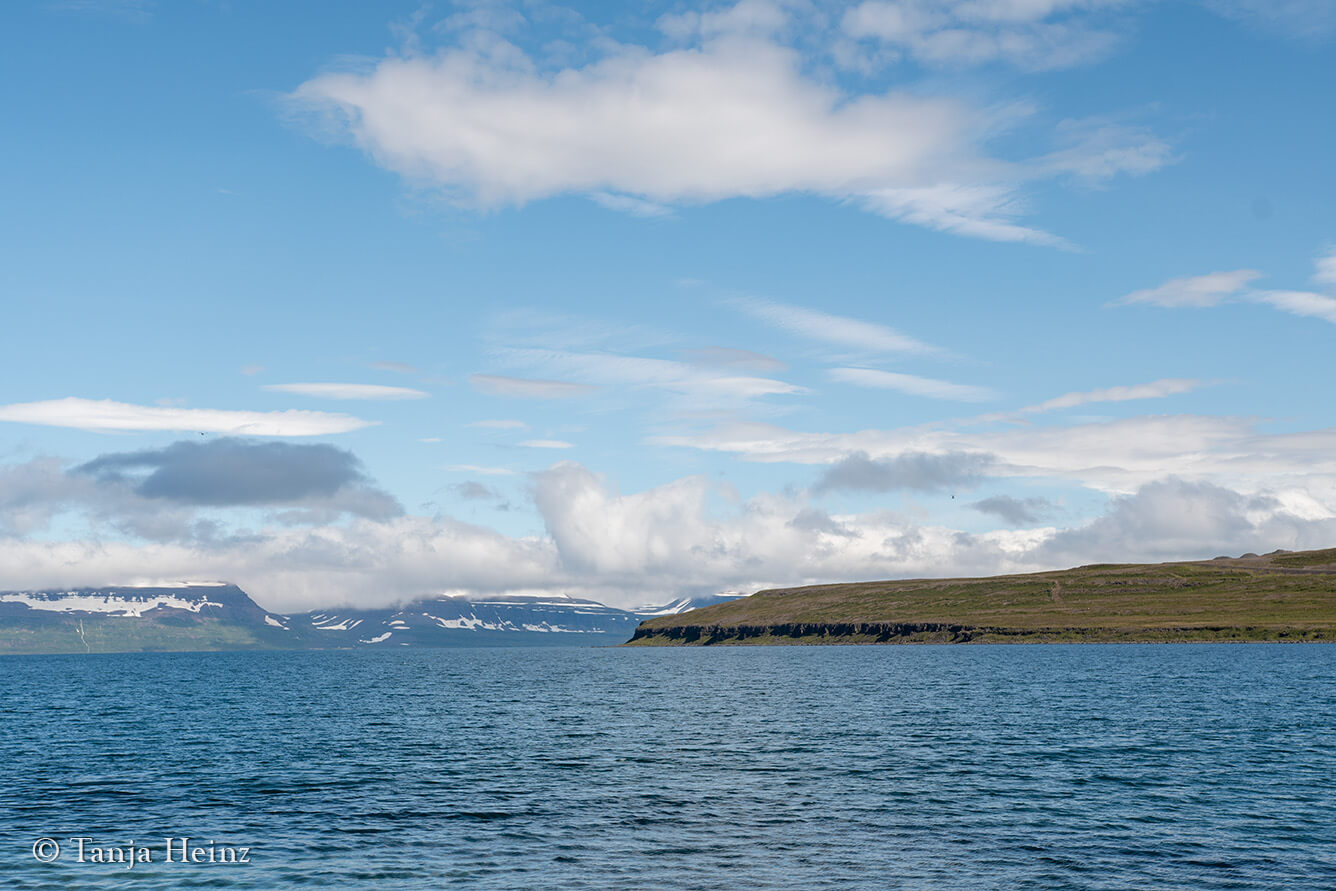
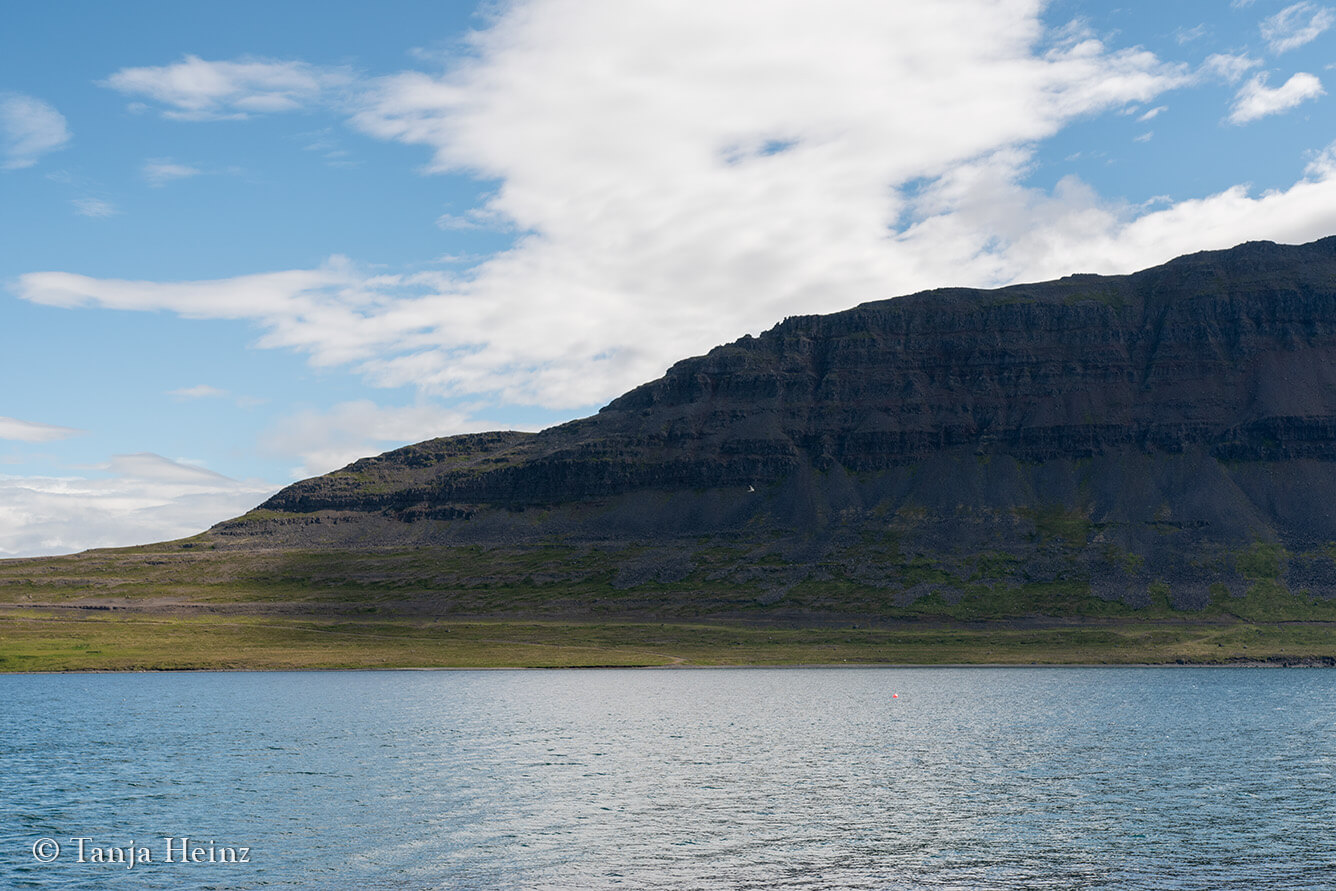
Súðavík is a small village about twenty kilometres from Ísafjörður. Less than 200 people live in the village.
Despite its small size, tourism is one of the village’s main industries. The other main industry in Súðavík is fishing.
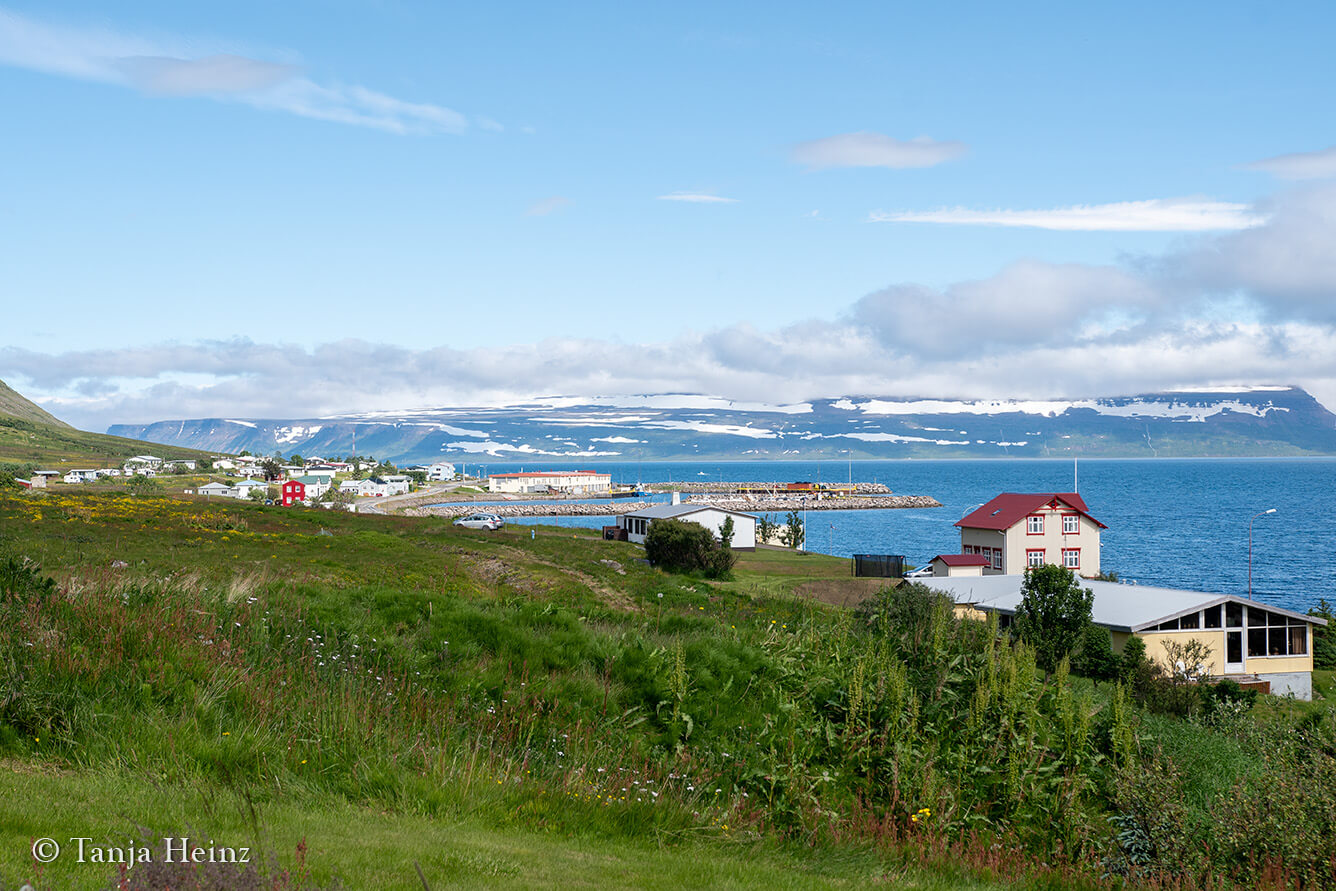
Due to lack of time, I only visited the Arctic Fox Centre in Súðavík.
I rented a bike at Borea Adventures. It was the only company I found to rent a bike. I paid 4.000 ISK for four hours. The other options would have been to rent the bike for the whole day for 8.000 ISK. Thus, renting a bike in Ísafjörður is quite expensive.
Maybe hitchhiking could be indeed an interesting, especially cheap options to get to the Arctic Fox Centre for some? Especially for those interested more in hiking, as Súðavík could be a good starting point for nice hikes.
Information: If you are interested in hiking, please visit the tourist information centre in Ísafjörður. I met people in the hostel that exclusively went hiking with Ísafjörður as a starting point. There are many different options in the town and a car is not necessarily important to rent (although often it is useful in Iceland).
The Arctic Fox Centre
Although I passed the Arctic Fox Centre in the first instance, it is not difficult to find it. There was just one street that led up to the centre.
As the Arctic Fox Centre was located up on a small hill, I had to descend from the bike and I walked up the steep street.
Finally, I arrived at the Arctic Fox Centre.
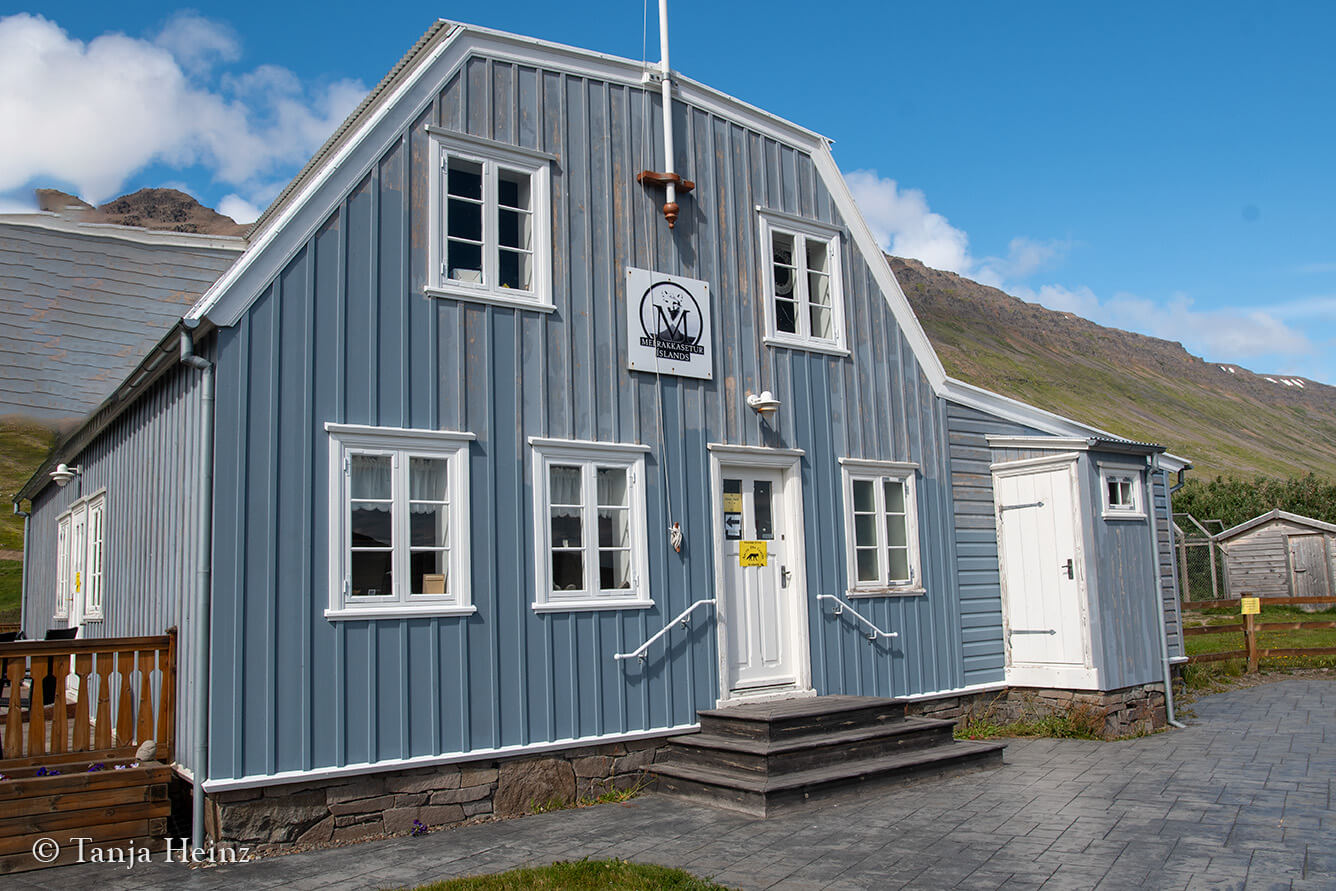
It was a very nice area. It was even possible to take a seat, drink some coffee or tea and eat a cake.
And when it is good weather it is especially beautiful outside on the outside porch. However, although it was a beautiful day, I did not see anyone on the porch...
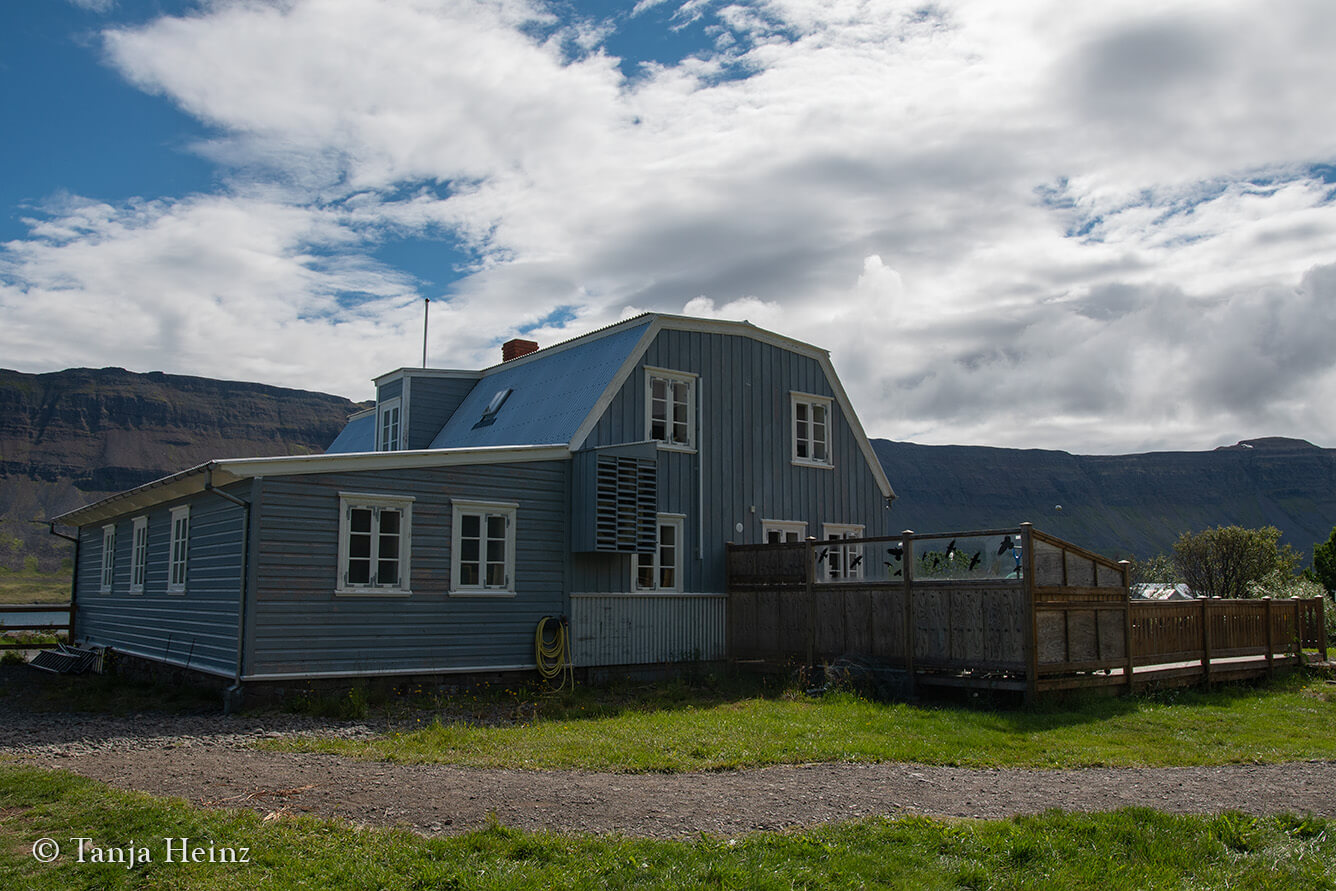
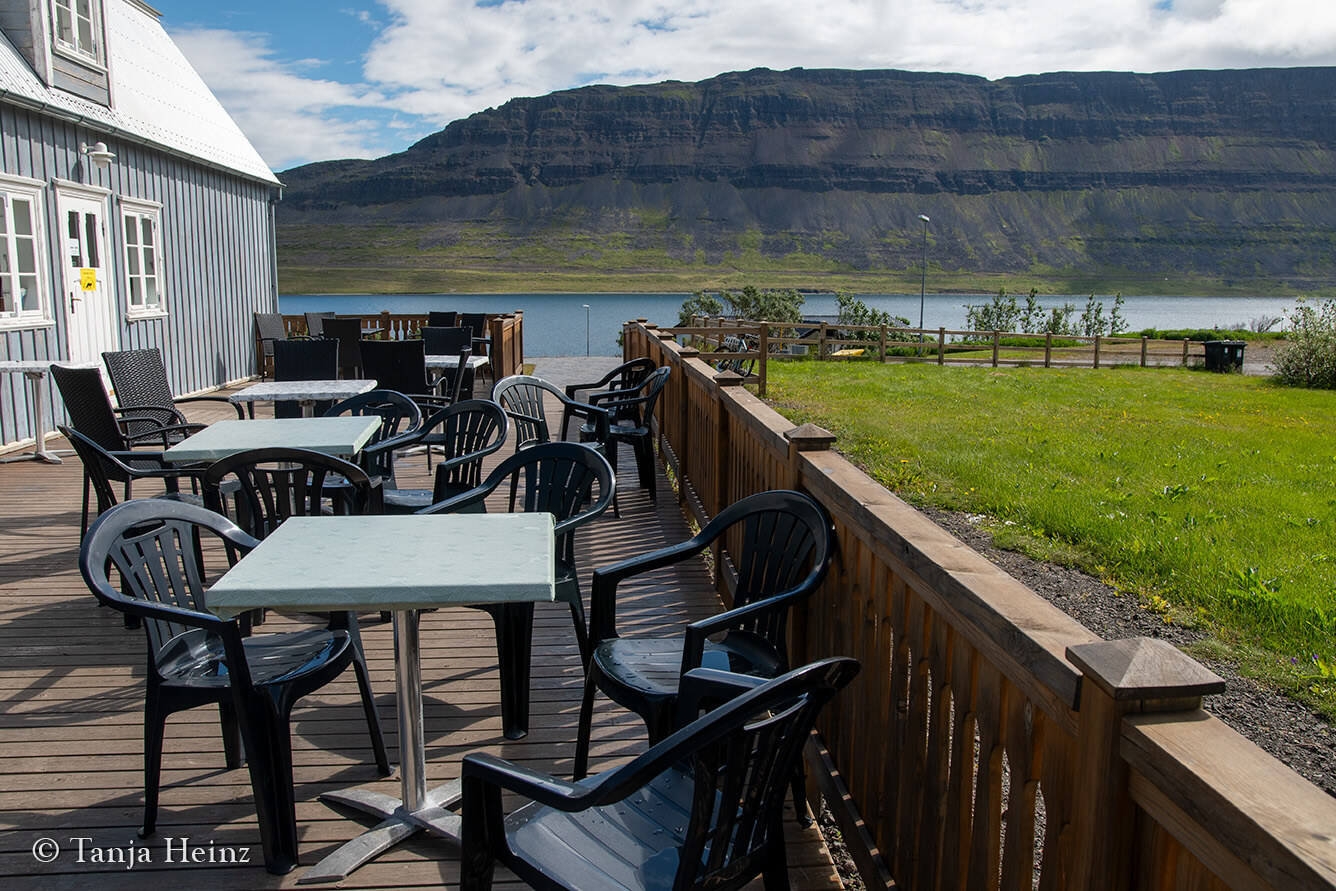
But I saw some people around the Arctic Fox Centre. I was not the only one. Well, I was the only one who came by bike. Other visitors arrived by car. There was a small parking lot just in front of the Arctic Fox Centre. Probably most visitors use a car to get to the museum.
Indeed, the area around the Arctic Fox centre is a nice starting point for hikes.
I saw a family with two girls starting a hike.
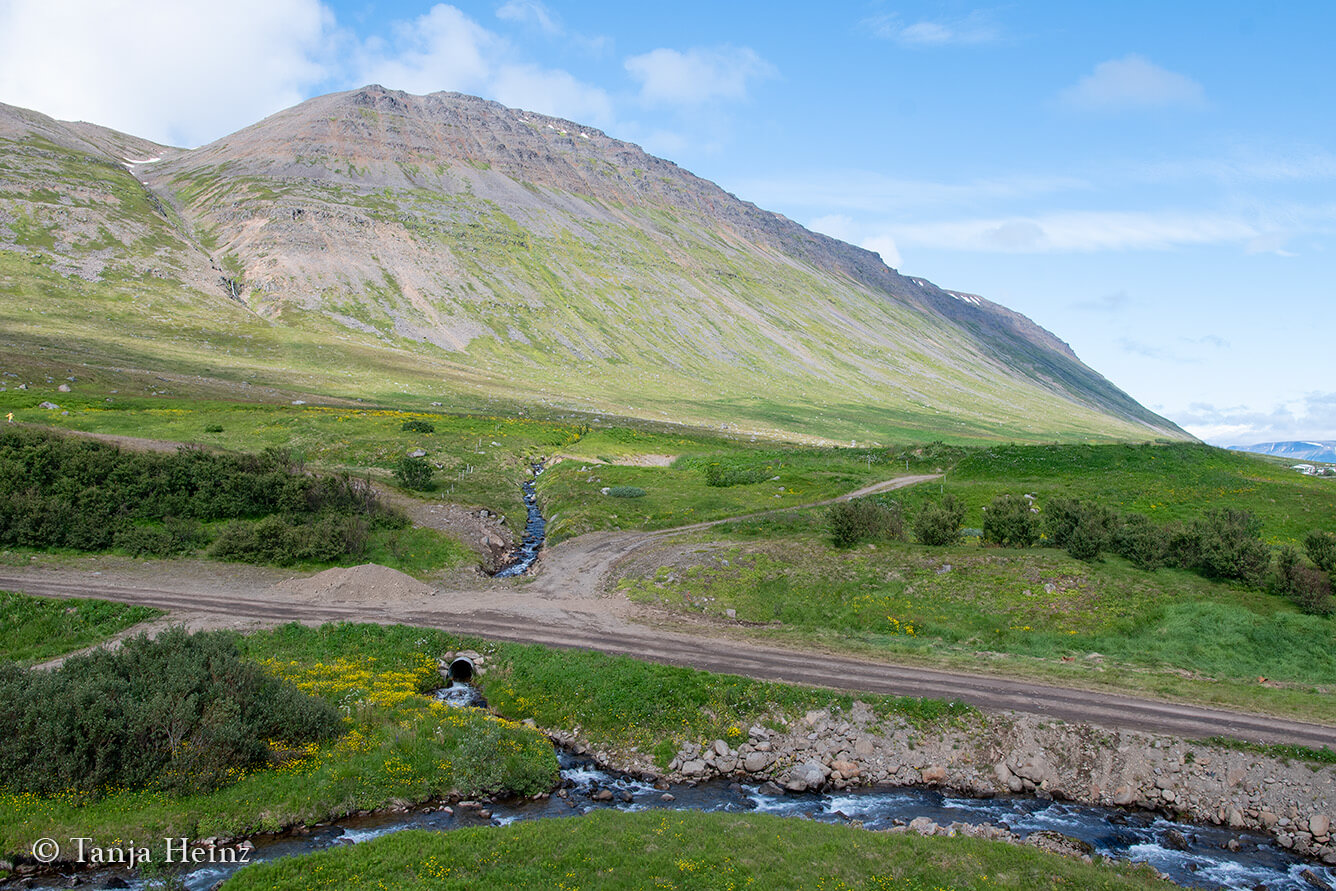

Before I entered the museum, I went to the Arctic fox enclosure.
There was a single Arctic fox sleeping in an enclosure.
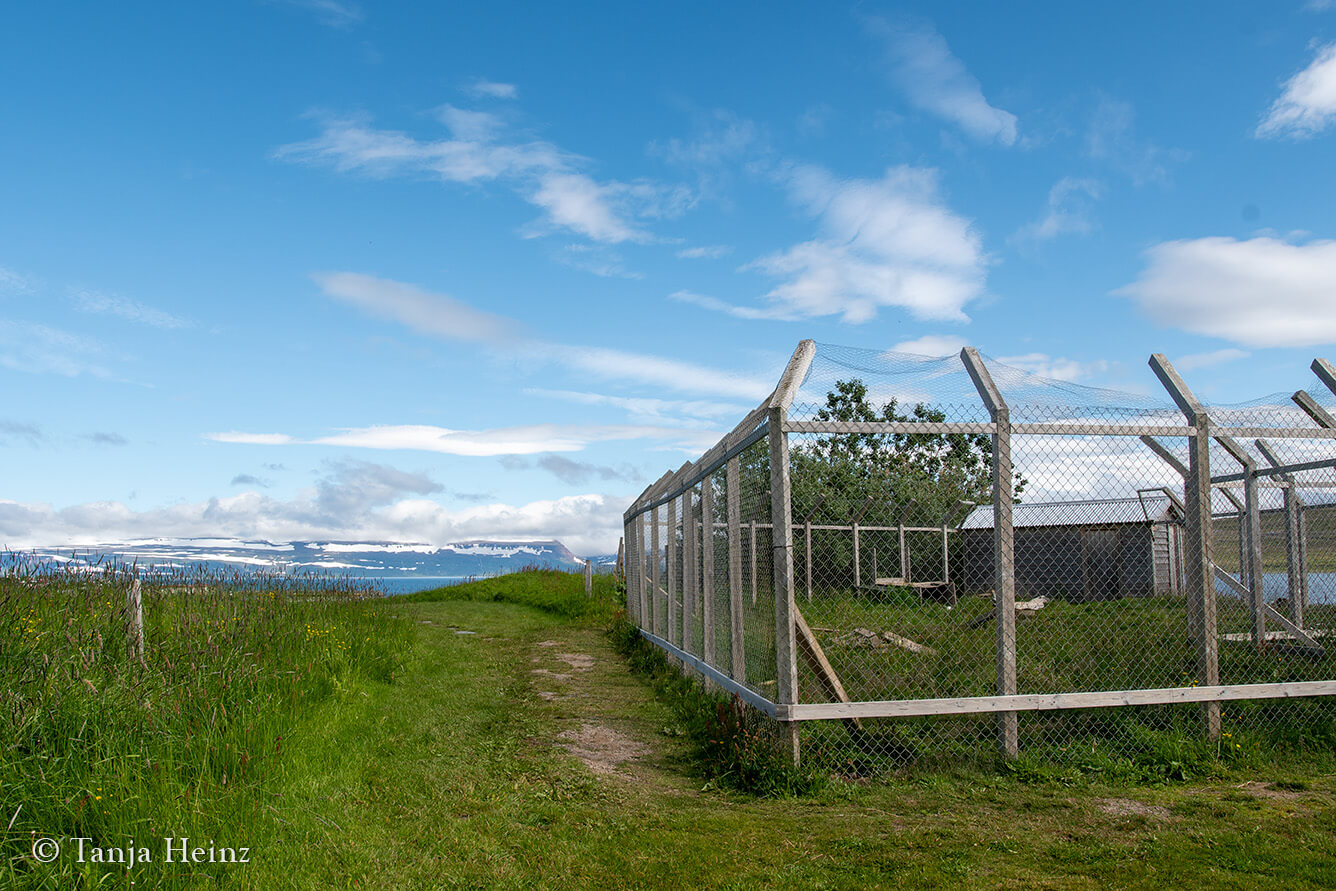
Exactly at that moment, I met the woman from the hostel who hitchhiked to the Arctic Fox Centre.
And at the same time, the Arctic fox in the enclosure woke up.
The Arctic fox went to the centre of the enclosure, seemingly to find a good viewpoint.
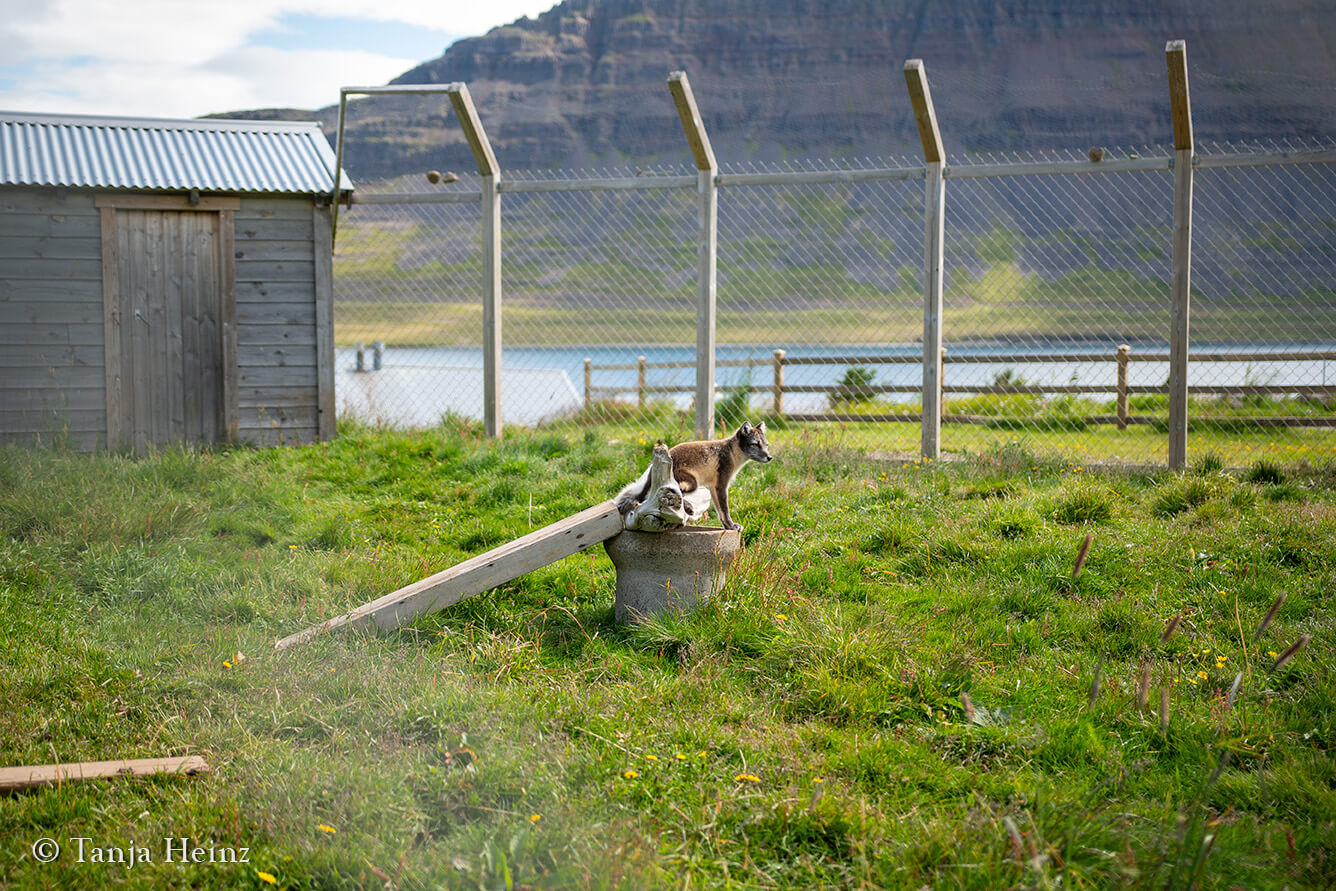
Then s/he moved back to its sleeping spot.
But as s/he seemed quite restless, s/he did not really sleep.
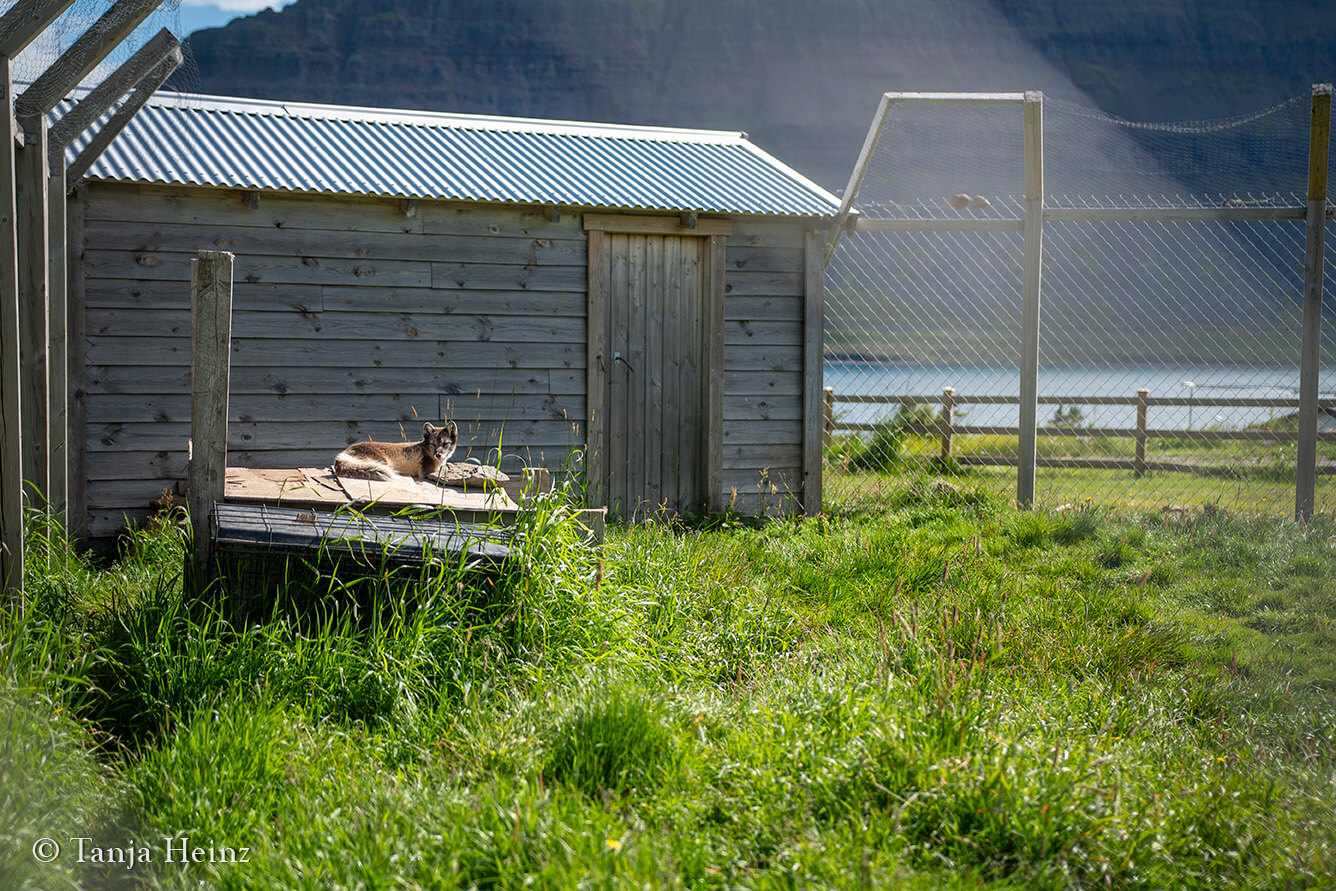
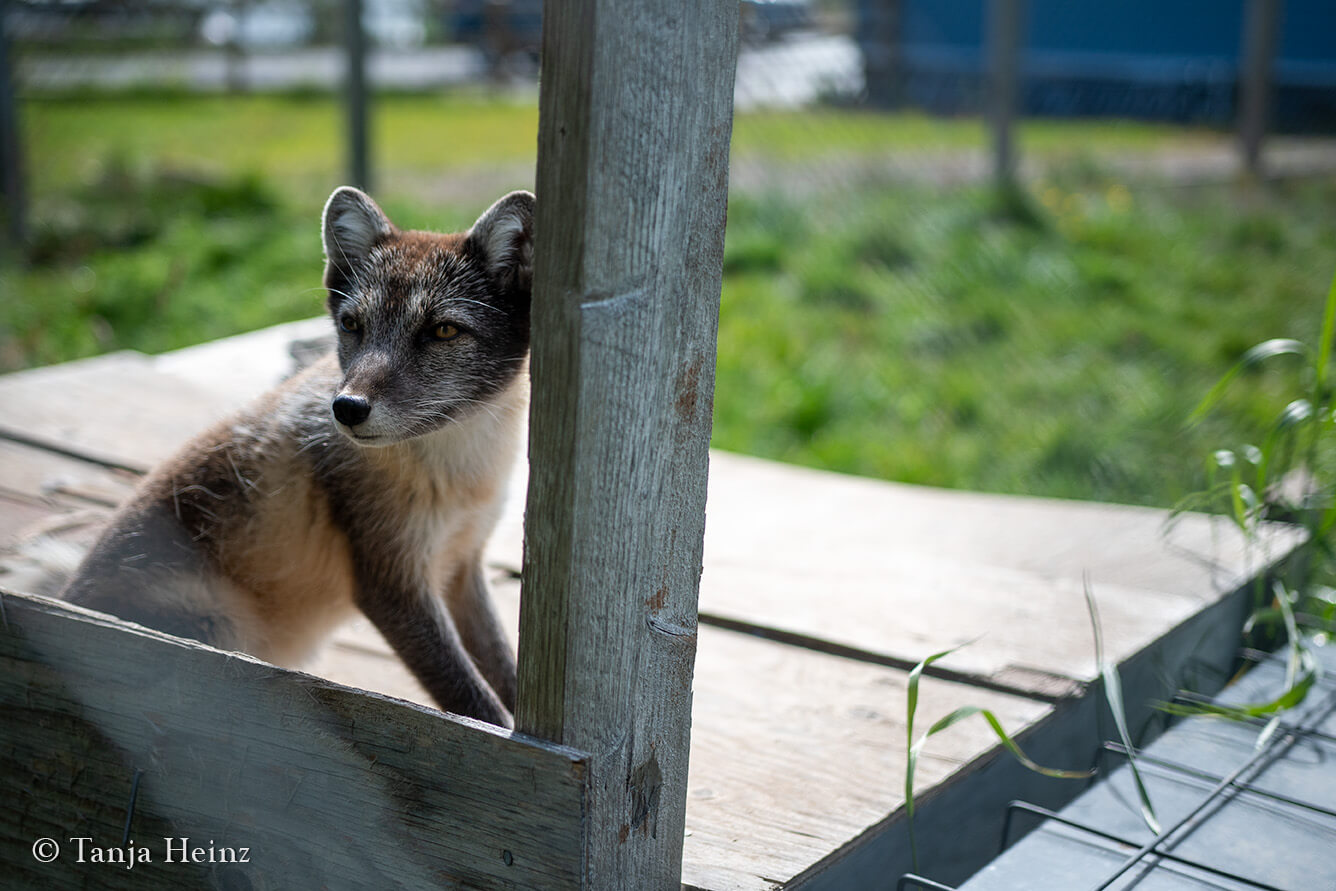
I was surprised how small Arctic foxes are. It was the first time for me to see these animals.
I compared them to the red foxes I knew from Germany. I recognized a significant size difference between the Arctic and red foxes.
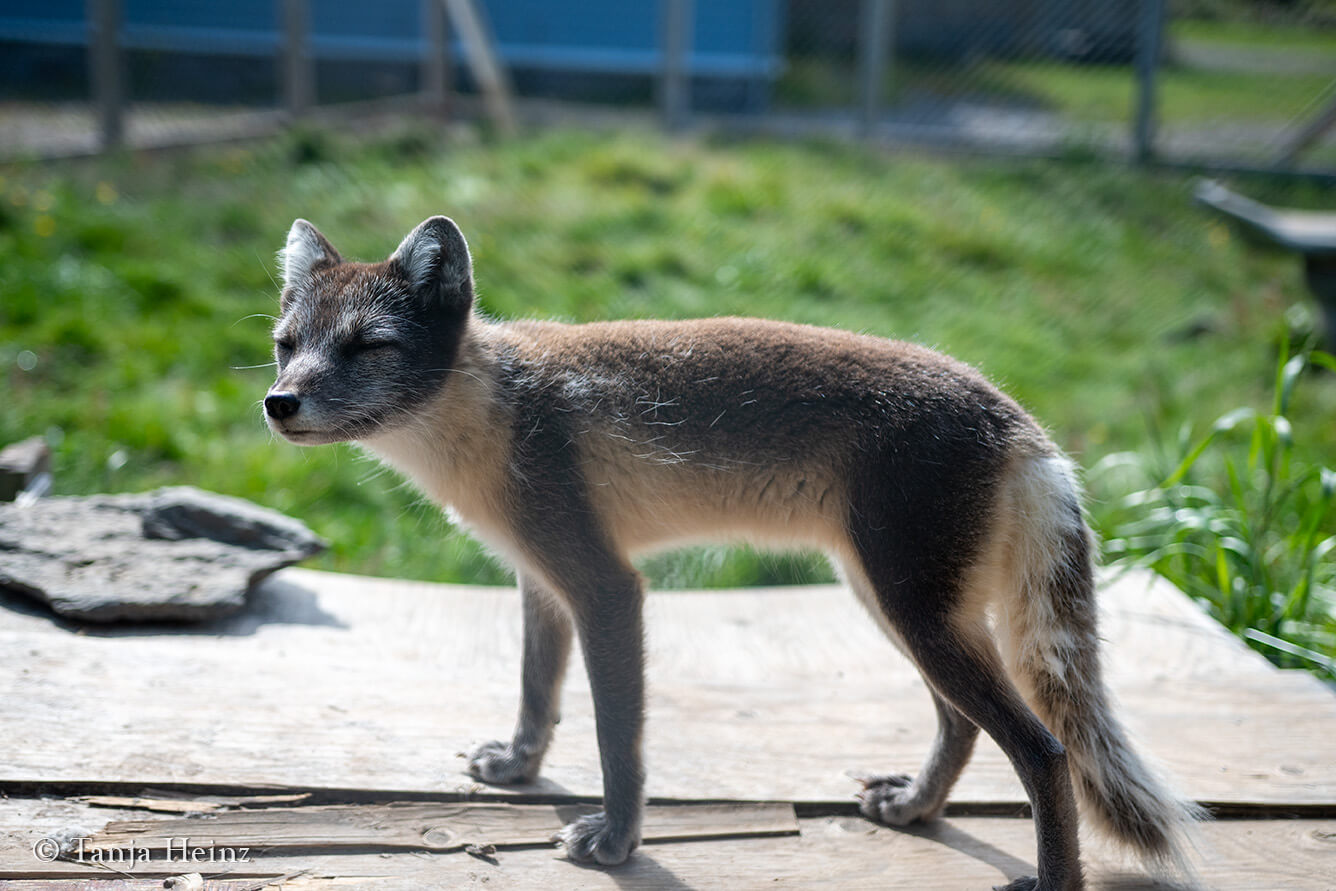
But why are Arctic foxes so small? Is it because of the harsh environment during the winter periods?
Well, I hoped to get an answer to this question inside the Arctic Fox Centre where an exhibition showed more about the biology of Arctic foxes. The exhibition was also about hunting practices in Iceland in the past or the history of Arctic foxes in Iceland in general.
I was curious and went to the exhibition to learn more about the Arctic foxes in Iceland.
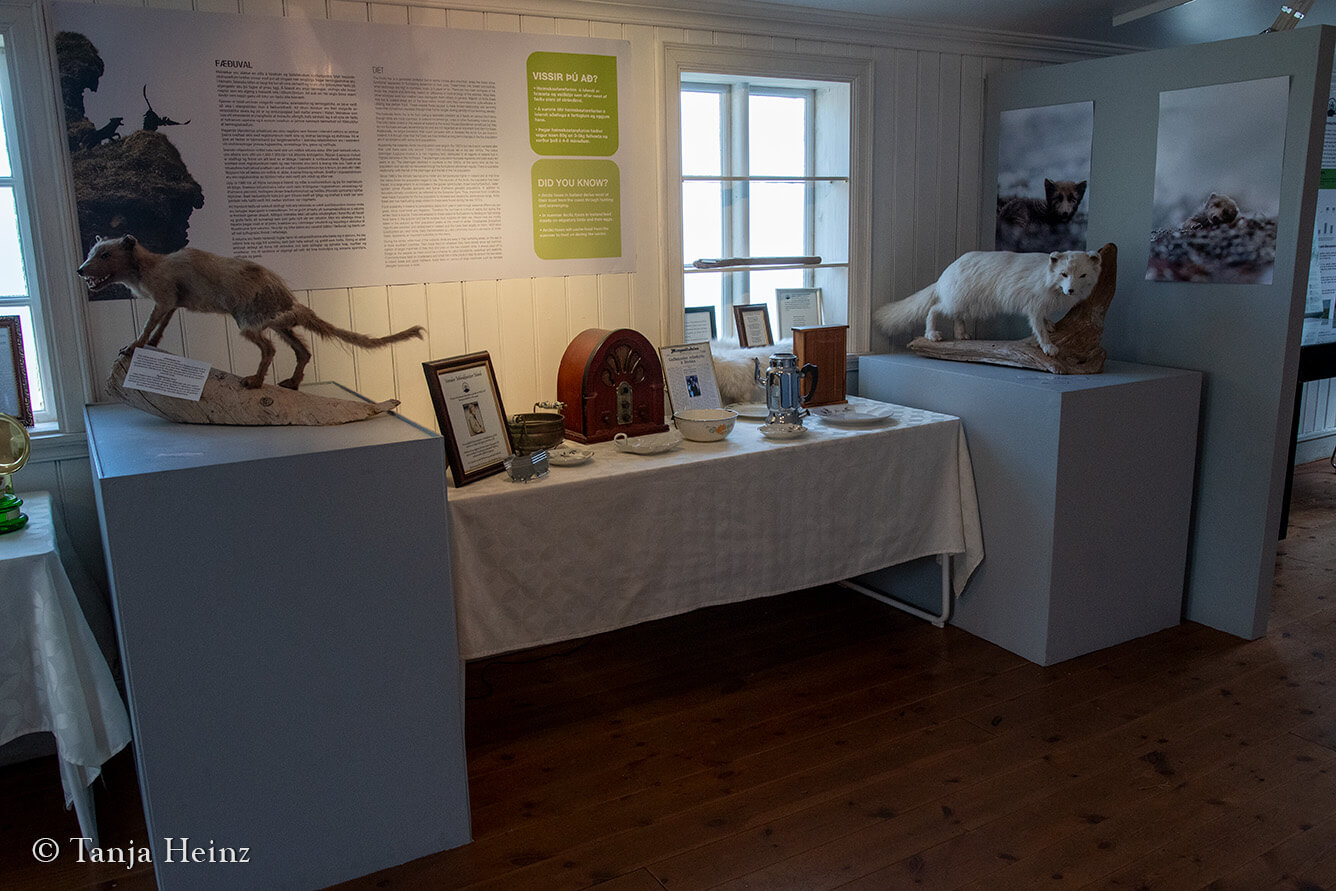
Arctic foxes in Iceland
The museum is full with information about Arctic foxes. This means that it is very recommendable visiting the museum before going to the Hornstrandir Nature Reserve to observe wild Arctic foxes in their natural environment.
Would I find an answer to the question why Arctic foxes are so small?
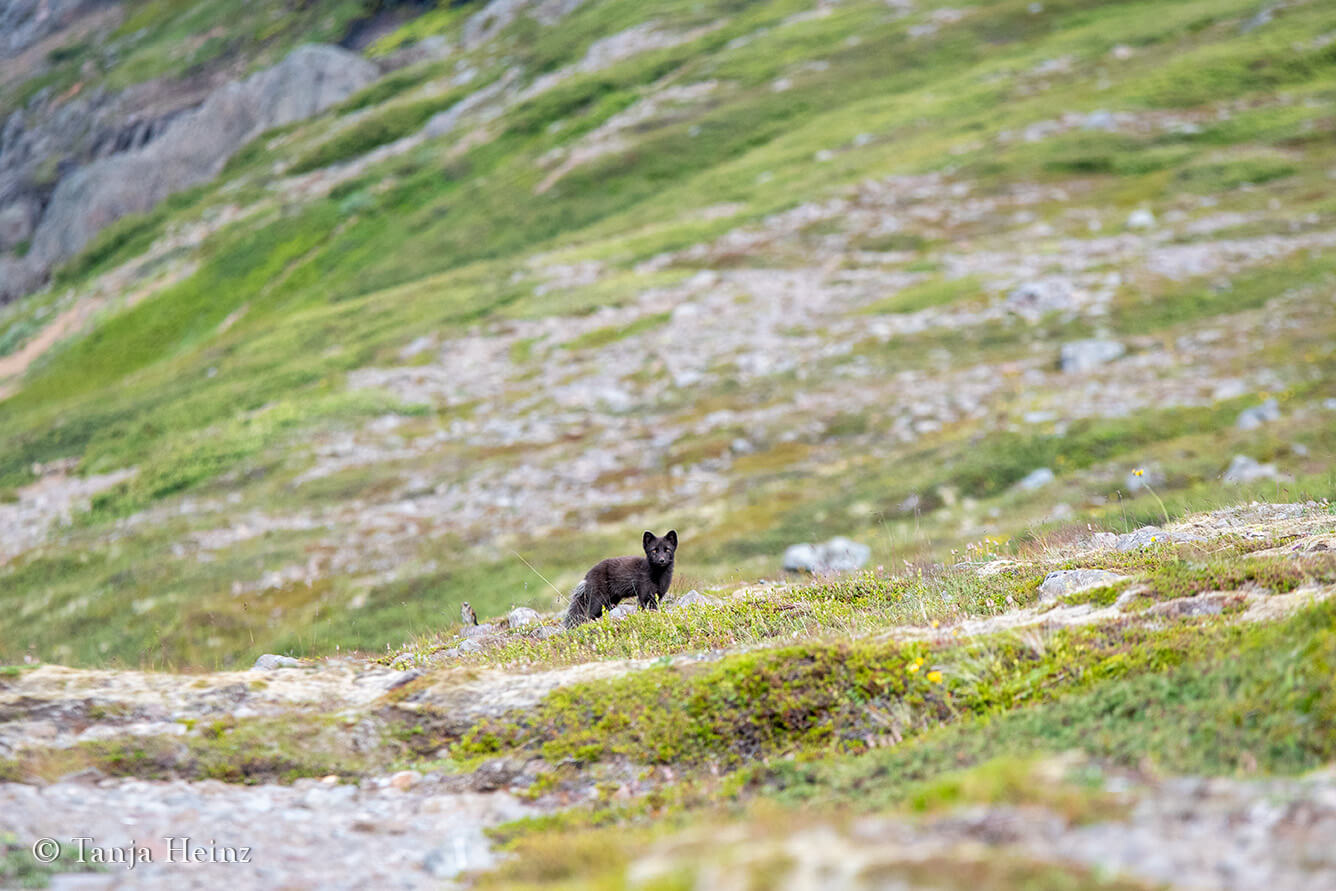
Well, I started the exhibition by reading some studies about Arctic foxes. In one study I learned, that tourism might affect the Arctic foxes at their dens, and thus, breeding success. Therefore, a code of conduct is especially important when observing Arctic foxes in the wild.
In the next section I focused on dens and territories. Arctic foxes live in dens where females give birth to their cubs. In one territory there might be more than one den. Depending on the area. For example, territories are larger in the Icelandic highlands than at the bird cliffs in the Westfjords.
At the Kvíar lodge in the Hornstrandir Nature Reserve - where I was in the following days - was at least one den.
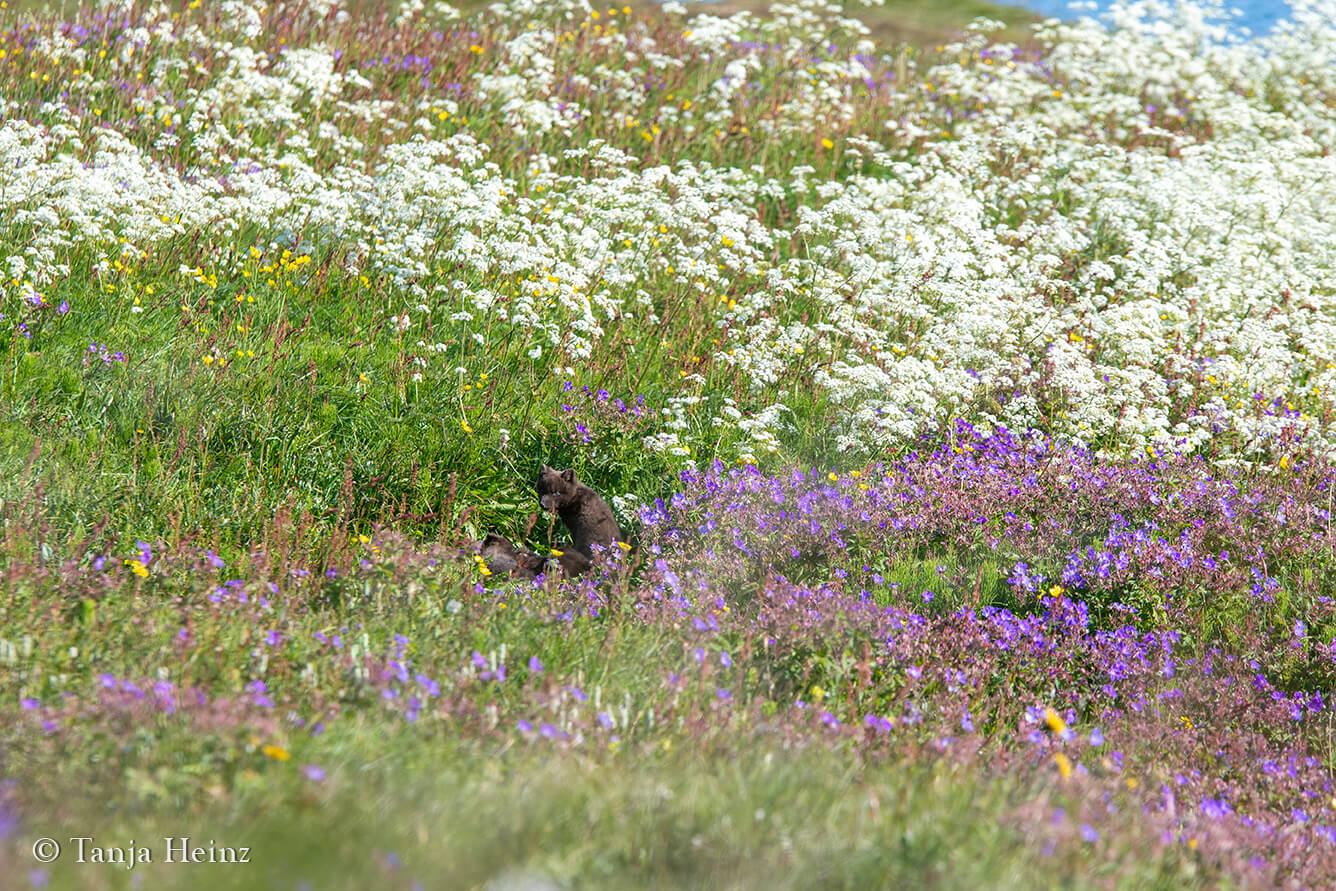
There is a white and blue colour morph among Arctic foxes. Blue morphs are brown all year round.
White morphs are more common than blue morphs. The white is an adaptation to snow-covered areas and acts as camouflage. In areas where the diet is mainly sea derived, blue morphs are prevalent.
This is the case in Iceland.
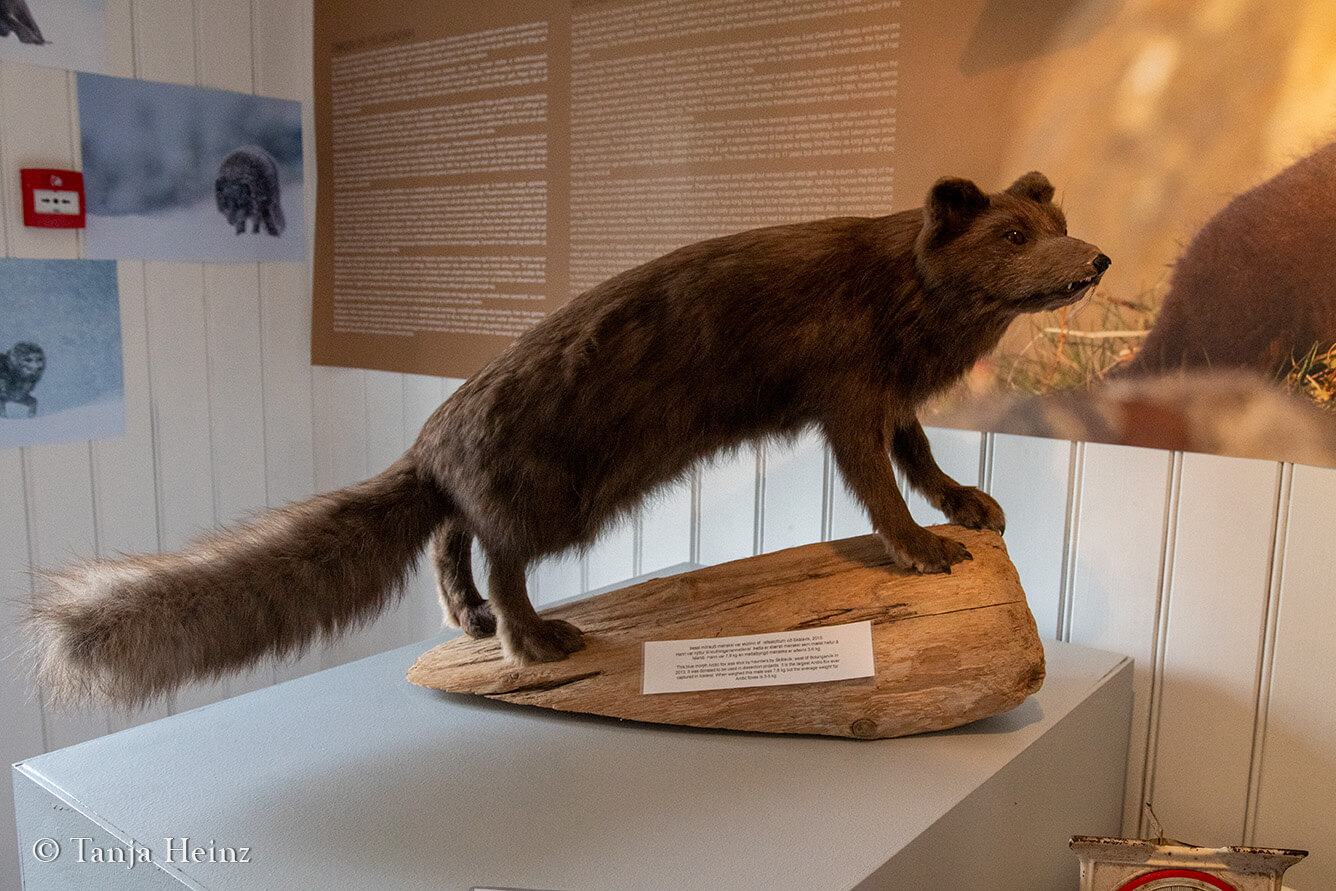
Interesting: About 90% of the worldwide Arctic fox population are white morphs and only 10% are blue morphs. In the Westfjords the blue morphs dominate. There, about 80% of the Arctic foxes are blue morphs. There is a third morph – a beige morph – but this morph is very rare.
In Iceland, Arctic foxes search for food at shores, and thus, the brown fur is a good camouflage among the seaweed and rocks.
Apropos food. Arctic foxes also may feed on migratory birds and their eggs.
When I was at the Arctic Fox Centre, I was not only finding out more about their food preferences, I was also wondering if the single Arctic fox in the enclosure was "lonely"?
Well, Arctic foxes are typically solitary animals. Or they live in monogamous pairs or families when breeding. Thus, it is quite normal for an adult Arctic fox being without conspecifics.
Be it the white, blue or beige (on the photograph) morph. They are typically solitary animals.
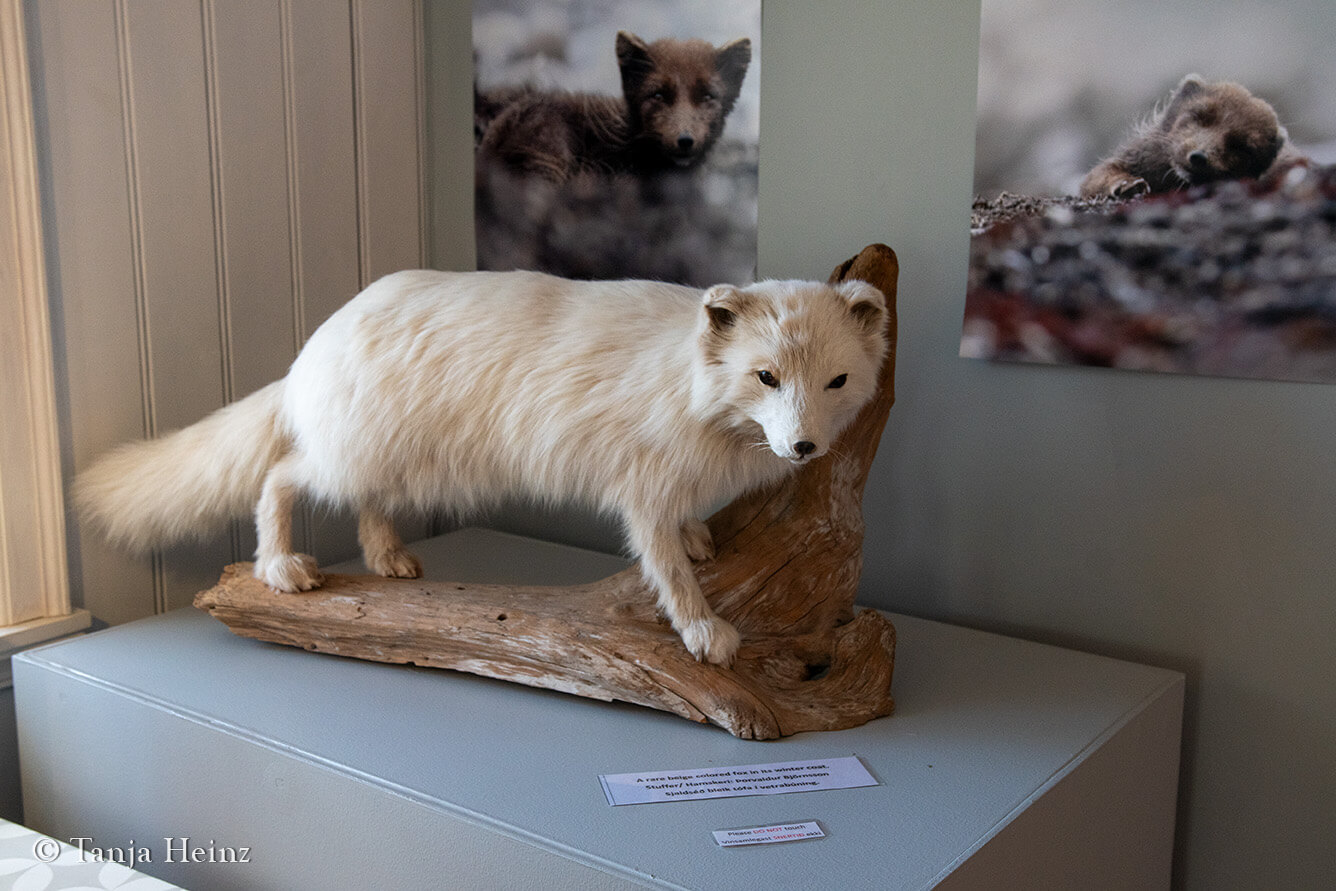
I also found quite interesting biological facts about Arctic foxes in the exhibition.
For example, Arctic foxes do not shiver until -70 °C. Furthermore, I found out that they have 20.000 hairs per 1 cm2 in their winter coats (humans only have 150!).
And well, I also found the answer to the question, why Arctic foxes are so small.
Arctic foxes have a shorter body, shorter limbs, and a shorter neck to minimize the relative volume to the area of the body. This adaptation prevents too much heat loss during the cold winters. Arctic foxes even have smaller, rounded ears when compared to the red fox.
However, males (~58 cm) are slightly larger than females (~55 cm). Interestingly, cubs typically reach adult size in four months.
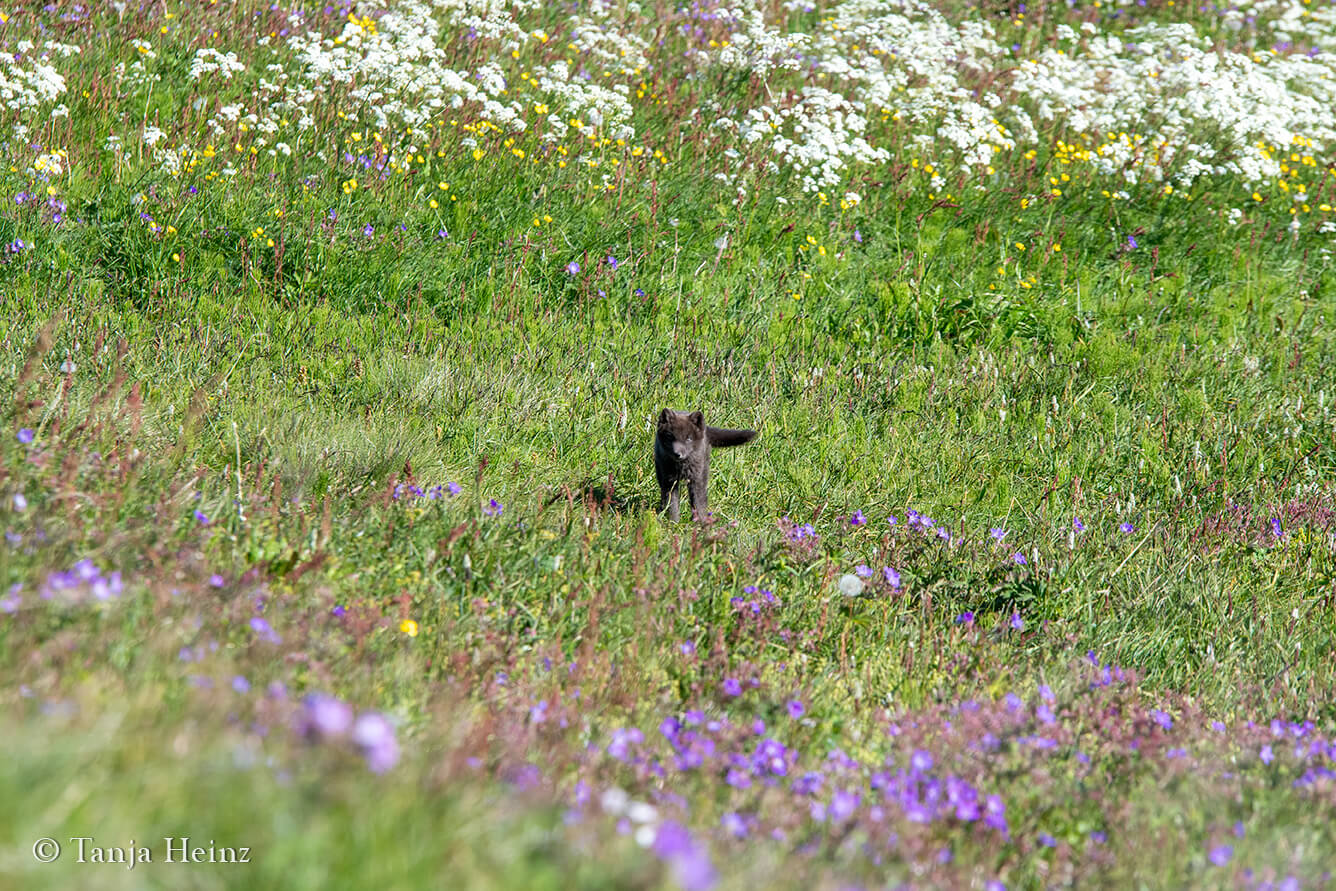
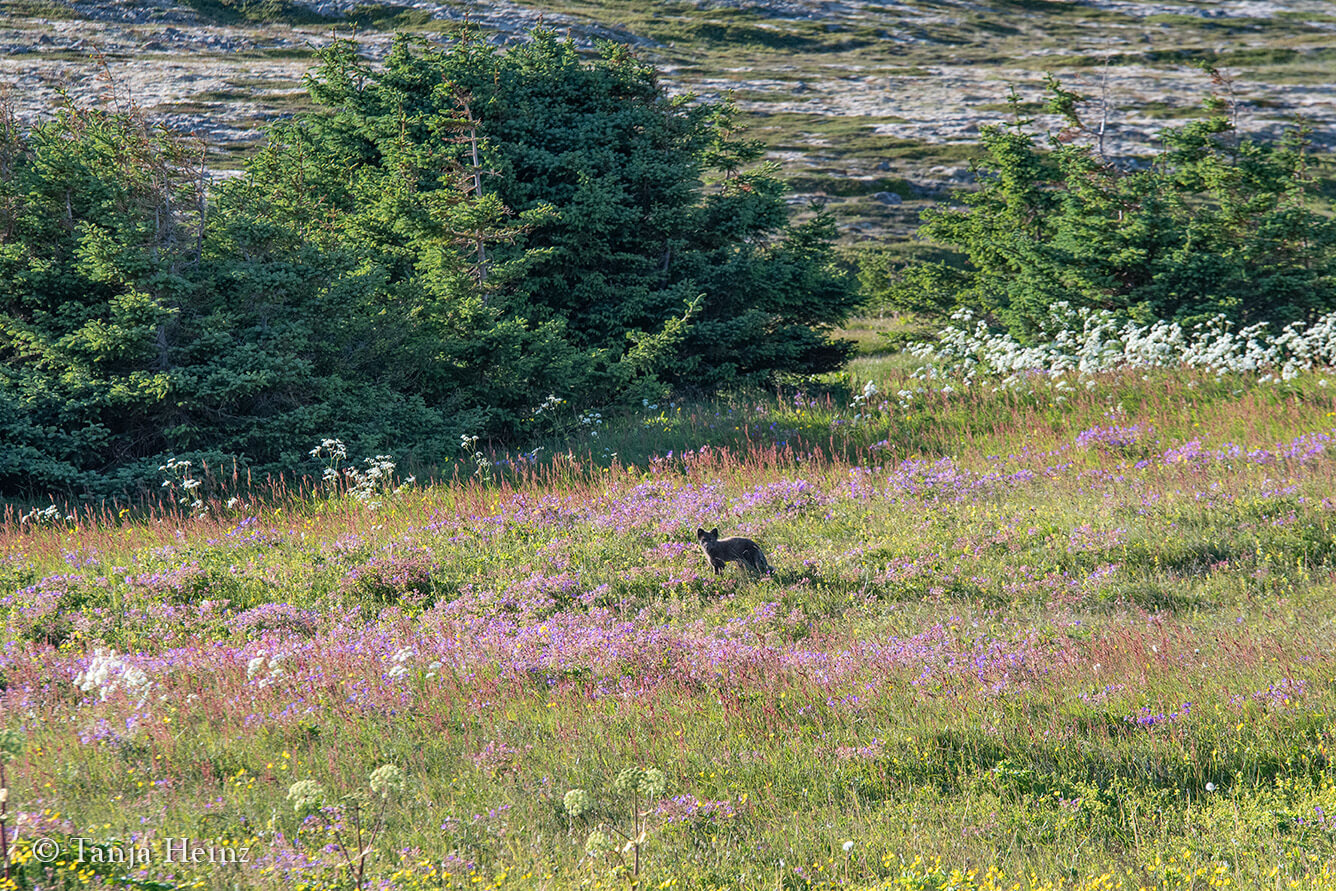
Arctic foxes are distributed all over Iceland. However, the highest density is in the Westfjords. This is probably due to the long coastal shoreline. Maybe the coasts in the Westfjords provide them better food resources than inland habitats?
Iceland is home to a great variety of birds and marine mammals. But did you know that the Arctic fox is the only native terrestrial mammal in Iceland?
Well, I indeed learned quite a lot in the Arctic Fox Centre in Súðavík and it was a very good decision to visit first the exhibition and then the wild Arctic foxes in the Hornstrandir Nature Reserve the following days.
More information
Official website of the Arctic Fox Centre in Súðavík
Arctic foxes in the Hornstrandir Nature Reserve
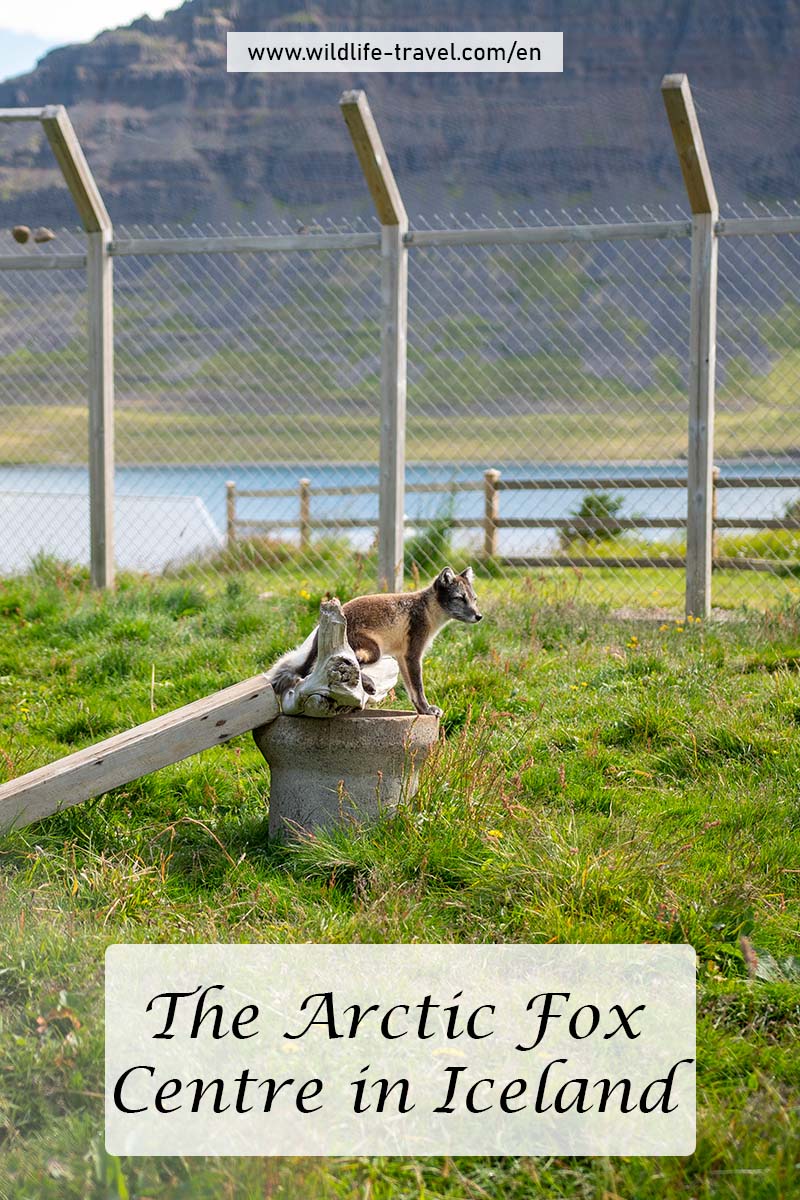
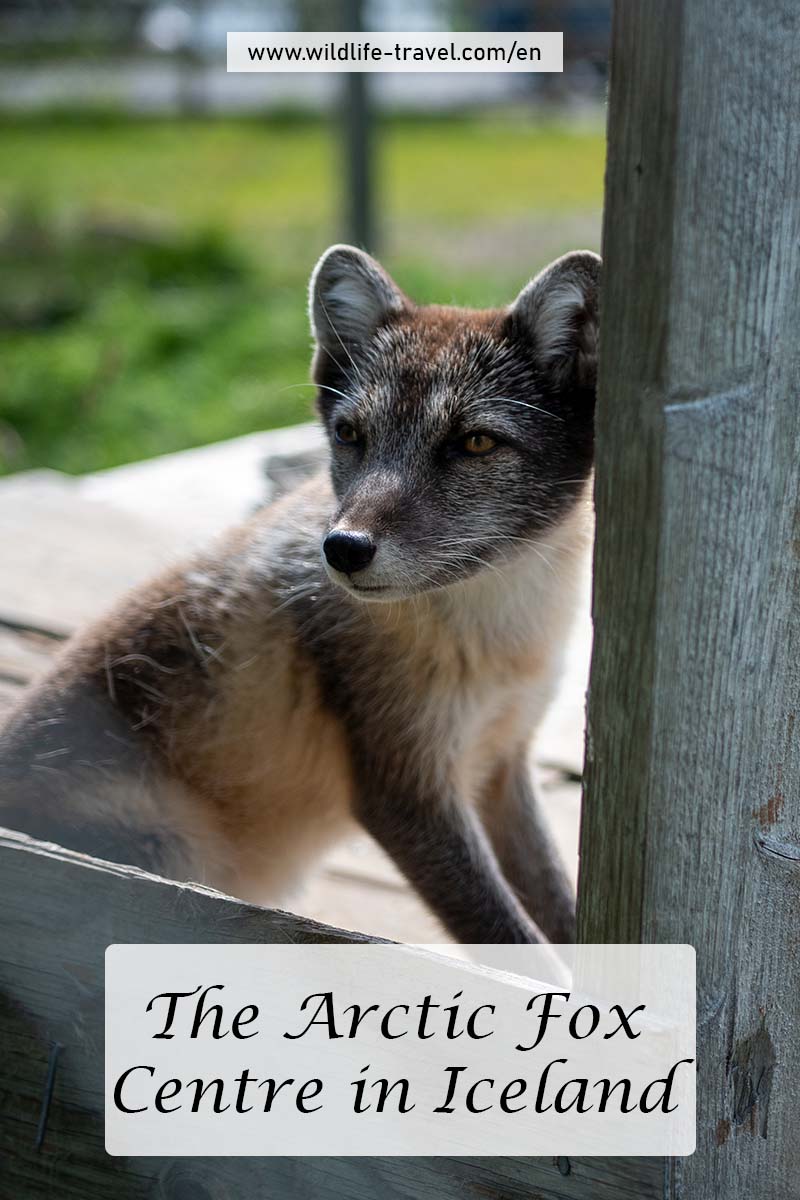
Have you ever been at the Arctic Fox Centre in Súðavík or seen an Arctic fox in its natural environment? Please let me know more about your observations in the comments.
